By Falcon Slayers
Apr 15· 30 min read
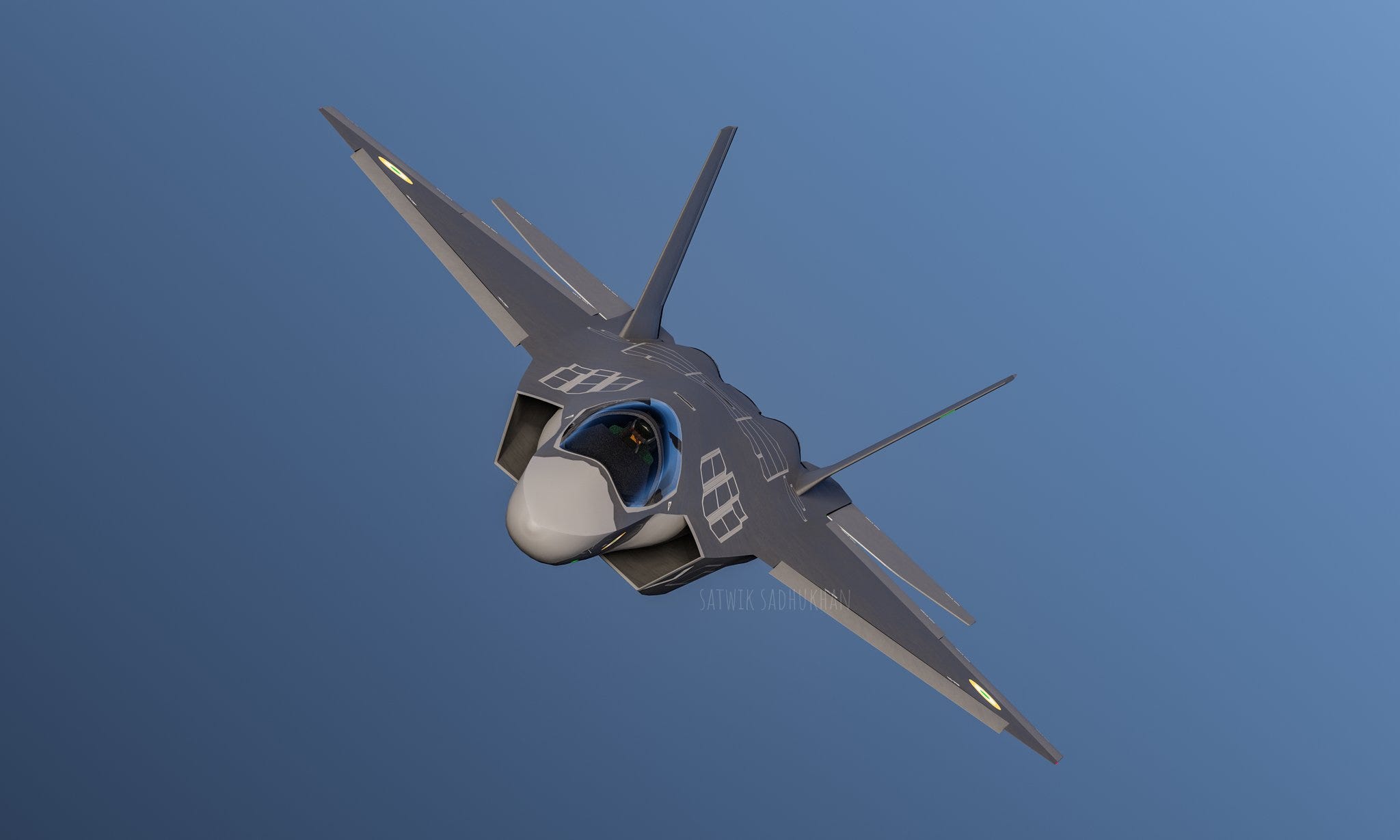
An unofficial rendering of the Advanced Medium Combat Aircraft based on the actual design
AMCA or the Advanced Medium Combat Aircraft is a fifth-generation fighter aircraft which will be manufactured by HAL. The AMCA programme is envisaged as replacement for a host of aircraft currently operated by the IAF as well as to fill gaps left by retirement of the Dassault Mirage 2000s, SEPECAT Jaguars and Mig-27s. ADA describes the AMCA as a “multirole combat aircraft for air superiority, point air defense, deep penetration/strike, special missions”.
Unofficial design work on the AMCA started in 2008 with official work started in 2011 and completed in 2014. In 2008 Indian Navy also showed interest in the naval variant of AMCA. All the design work is completed and HAL has started the manufacturing of the AMCA Prototypes, starting with the manufacturing of avionics and subsystems.
The broad requirements outlined for the AMCA are to incorporate a high degree of stealth, a high internal and external weapons payload, high internal fuel capacity, and the ability to swing from an air-to-air role to air-to-ground. It is also going to have the ability to super cruise. This allows the aircraft to travel at supersonic speeds with greater endurance as the afterburners do not have to be used with the additional fuel usage for Super Sonic flight. Even though future air combat has been envisaged as being beyond visual range excluding the likelihood of aerial dogfights as before, the AMCA is going to sport a 3D thrust vectoring nozzled engine. The ADA has designed the AMCA as a platform with high survivability, to meet the challenges of future air defense environments through a combination of high degree of stealth, electronic warfare capability, sensors and kinetic performance. The design philosophy seeks to balance aerodynamics and stealth capabilities.
The aircraft will have an empty weight of 12 tons with 2-tons of internal weapons and 4-tons of internal fuel. Combat ceiling will be 65,000 feet, max speed of 1.8-Mach at 11-km altitude. The AMCA will be powered by 2 x 110 KN thrust engines with vectored nozzles.

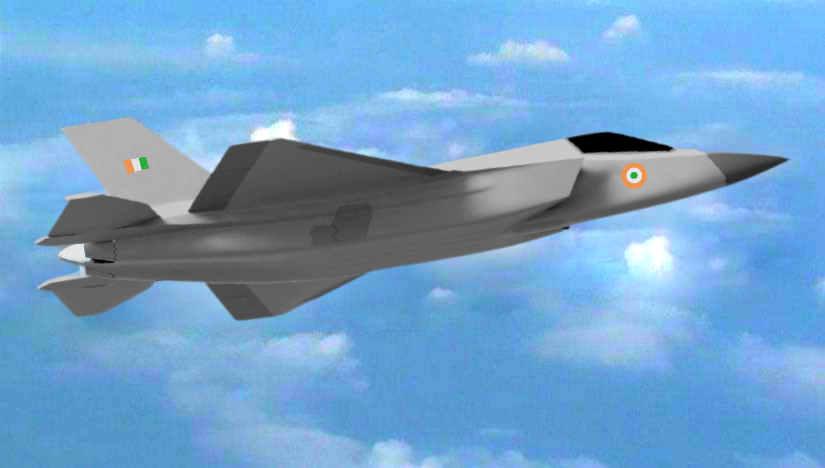
The Advanced Medium Combat Aircraft

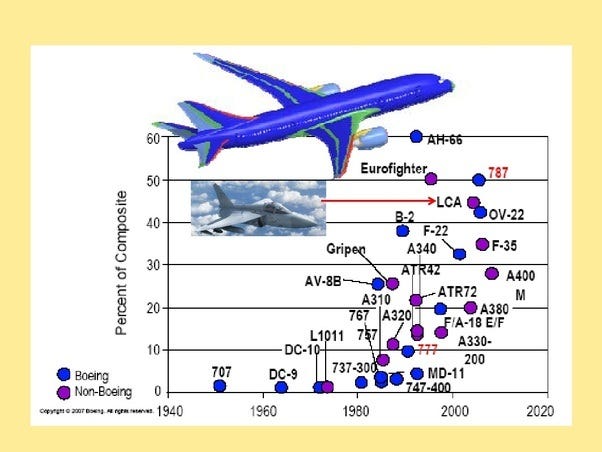
A graph showing Aircrafts with amount of composites used in manufacturing of the airframe, LCA has among the highest in fighter aircrafts.
The AMCA would employs C-FC materials for up to 60-80% of its airframe by weight, including the fuselage (doors and skins), wings (skin, spars and ribs), elevons, tailfin, rudder, air brakes and landing gear doors. Composite materials are used to make an aircraft both lighter and stronger at the same time compared to an all-metal design, and the AMCA’s percentage employment of C-FCs is one of the highest in an aircraft. Apart from making the aircraft much lighter compared to conventional metal airframed aircraft, There are also fewer joints and rivets, which increases the aircraft’s reliability and lowers its susceptibility to structural fatigue cracks, improves the maintainability of the Aircraft causing a better availability rate. High usage of composite materials in AMCA will improve its stealth character. The majority of these composite materials are bismaleimide (BMI) and composite epoxy material. The aircraft will be the first mass-produced aircraft to include structural nanocomposites, namely carbon nanotube reinforced epoxy. Stressed ducts in s-shape are locked with airframe with the loaded bulkheads which are made of composite materials spanning the aircraft from air intake to engine shafts.

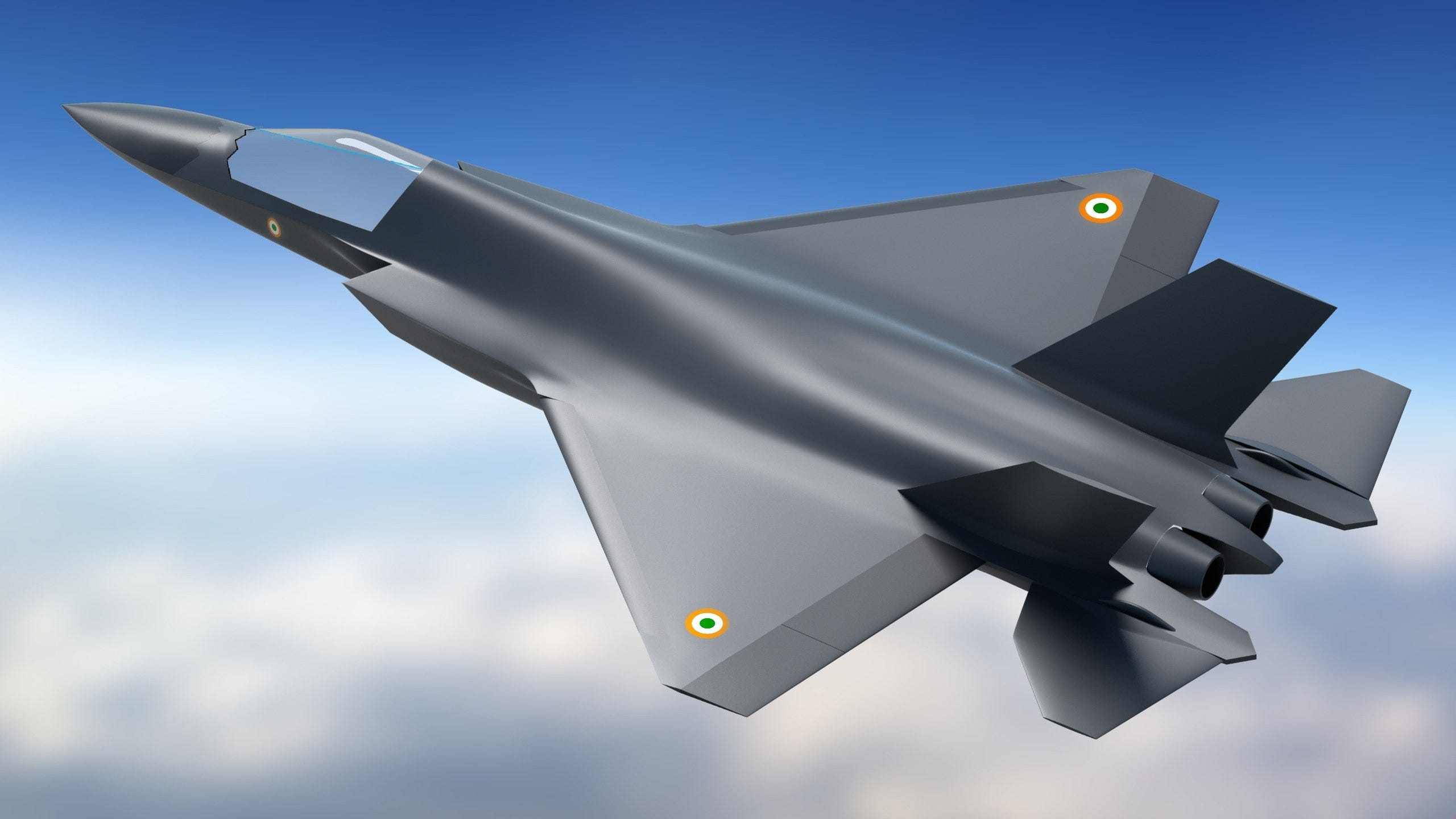
A leading-edge root extension (LERX), which is a small fillet, is situated on the front section of the intake and wings of the aircraft. It has a typically roughly rectangular shape, running forward from the leading edge of the wing root to a point along the fuselage. Also, the AMCA has an In-flight refueling (IFR) probe that retracts beside the cockpit during normal operation.
The AMCA will be capable of operating in manned as well as in unmanned modes. According to the Indian Air Force chief Rakesh Bhadauria, the AMCA will have “sixth generation characteristics”. He later said that such characteristics will added after first focusing on fifth-generation capabilities.

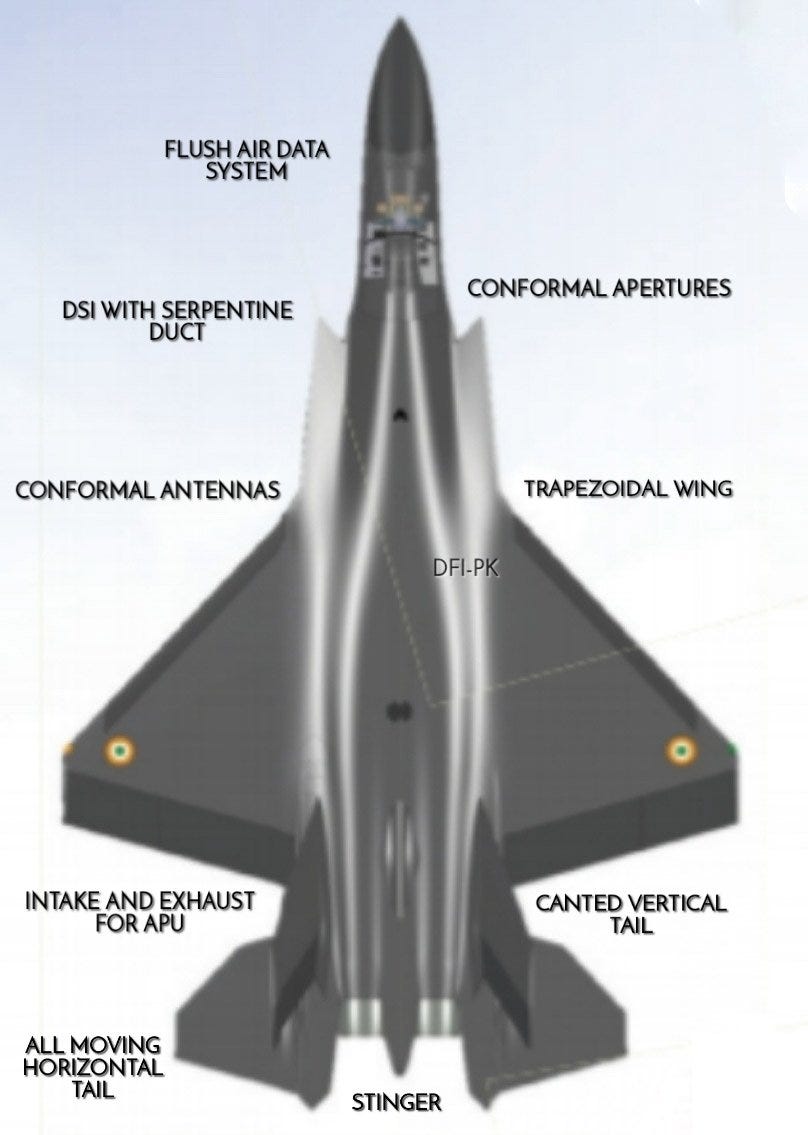

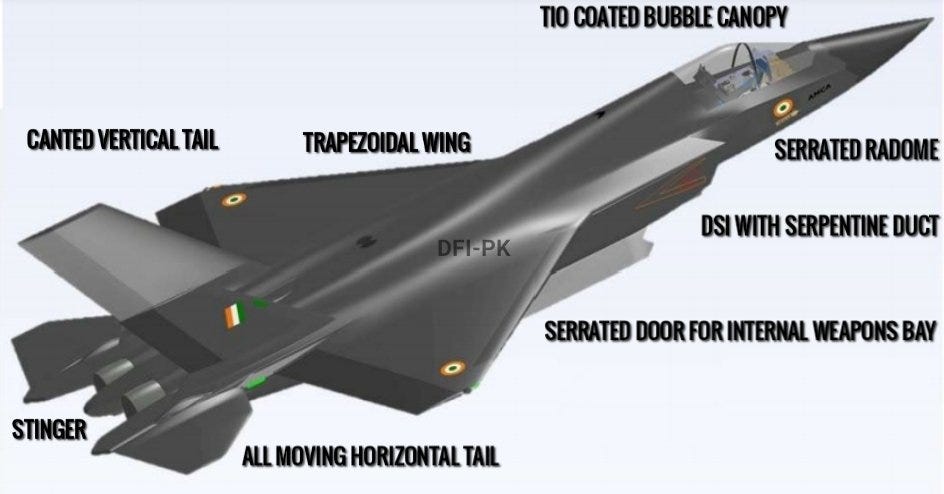

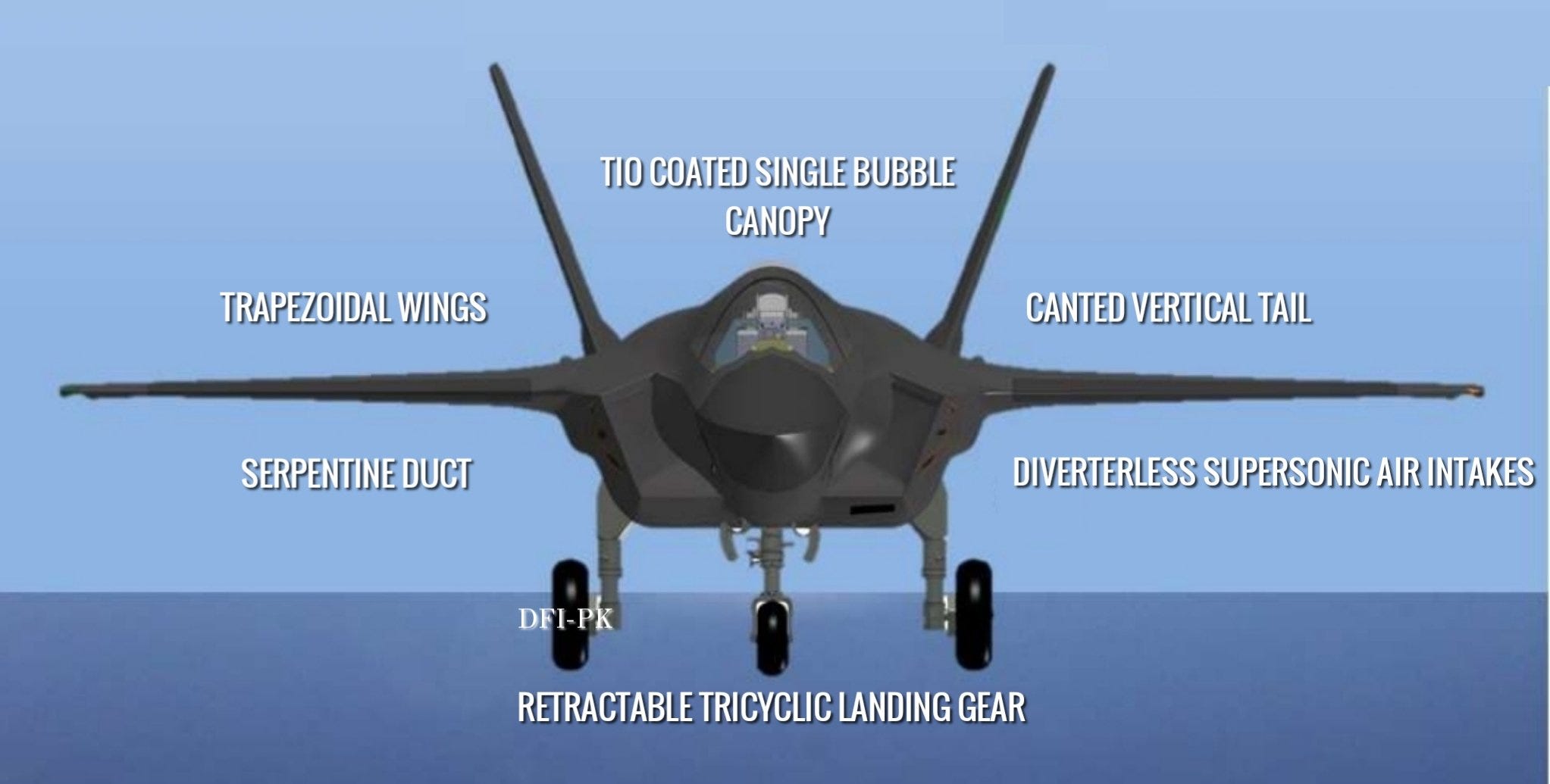
The structural layout of the aircraft incorporates some of the key design features that define a 5th- generation fighter aircraft. The following graphics show the evolution of the AMCA design, and is consistent with the modifications to that design over the years. The initial tailless double engine, delta design is clearly no longer in the offing, having moved to a double delta wing, with vertical and horizontal stabilisers in design 38–01. By 38–09 the angle of the vertical stabilisers has changed and the wings too have transitioned to a design much like the F-22.

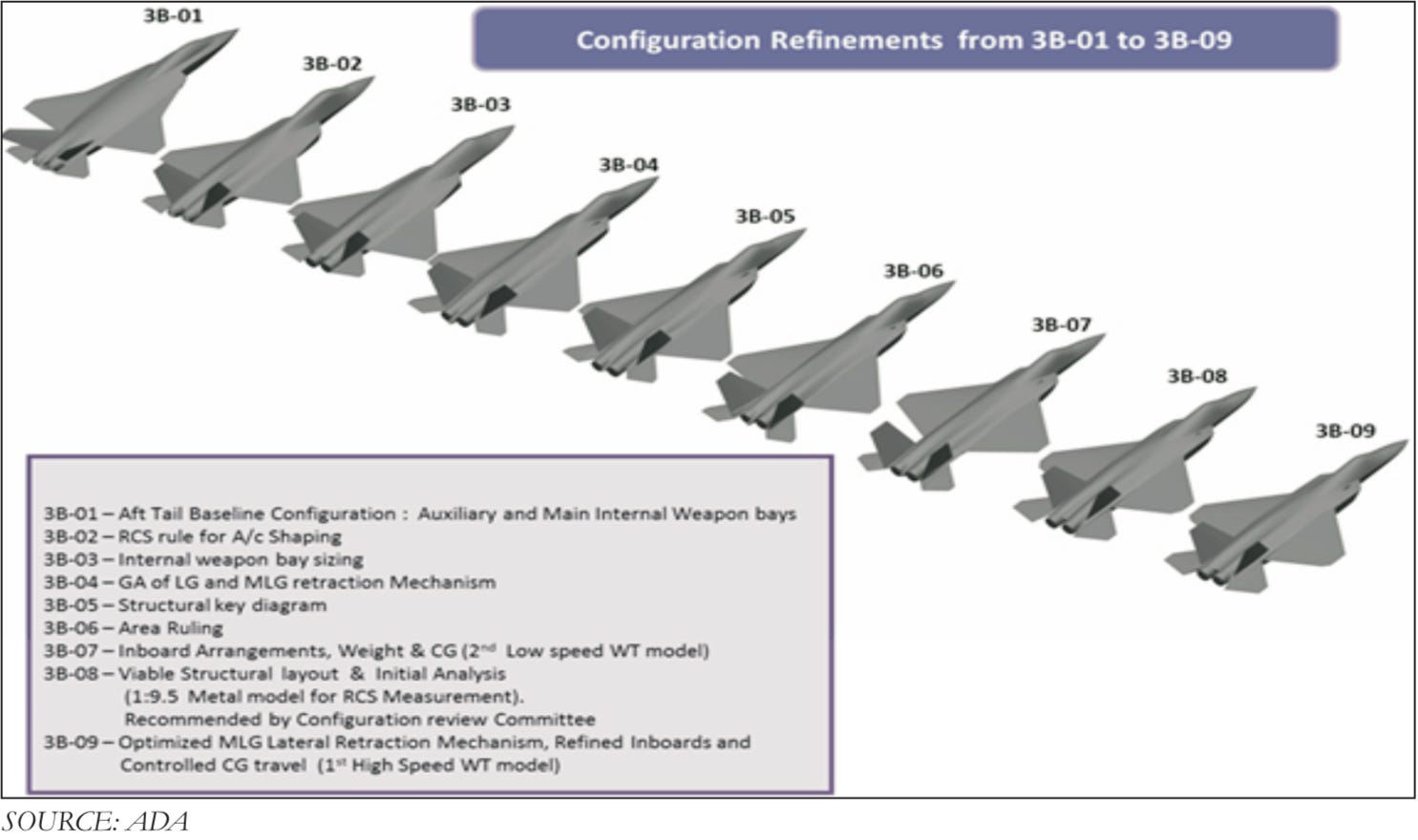



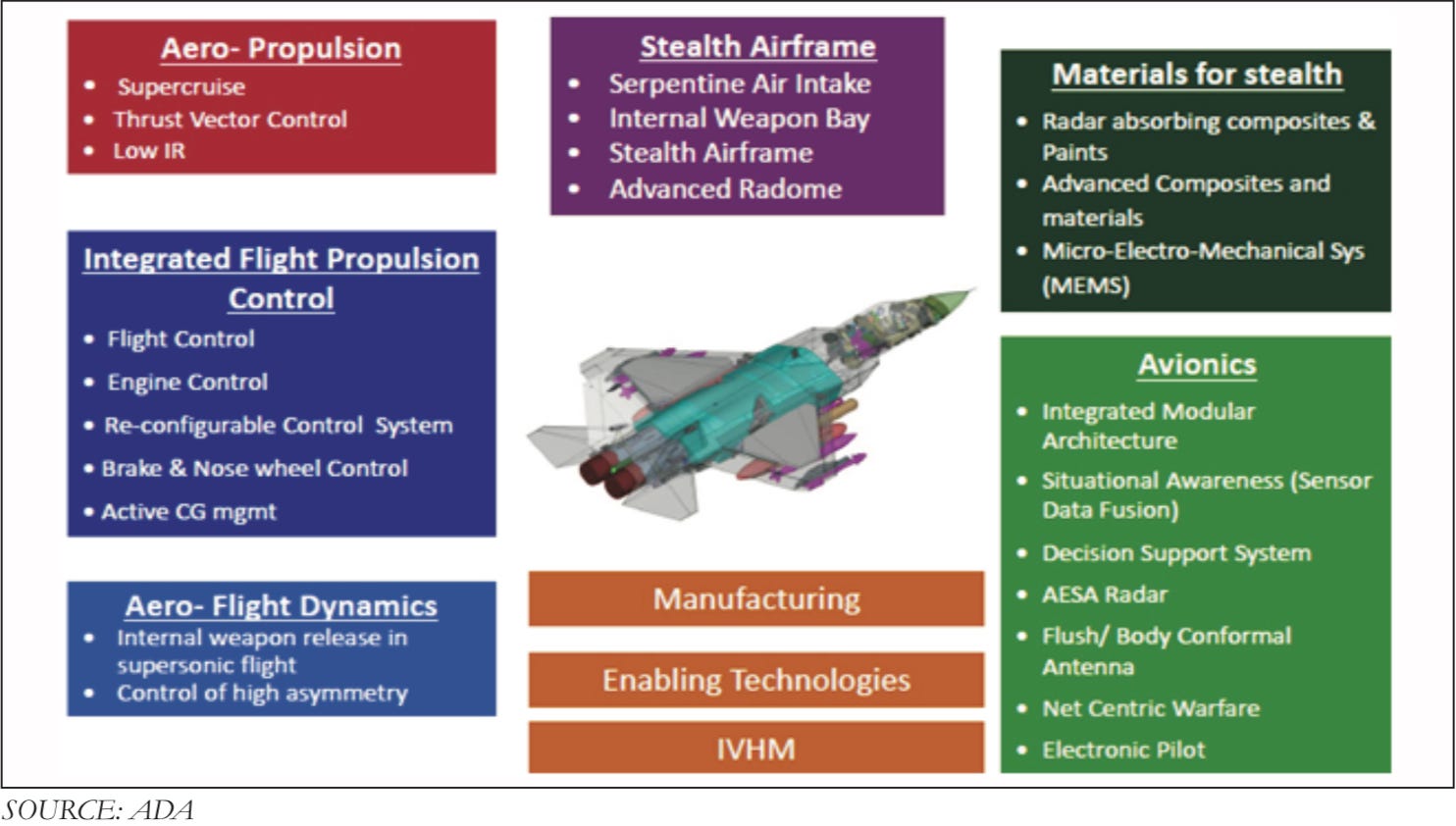

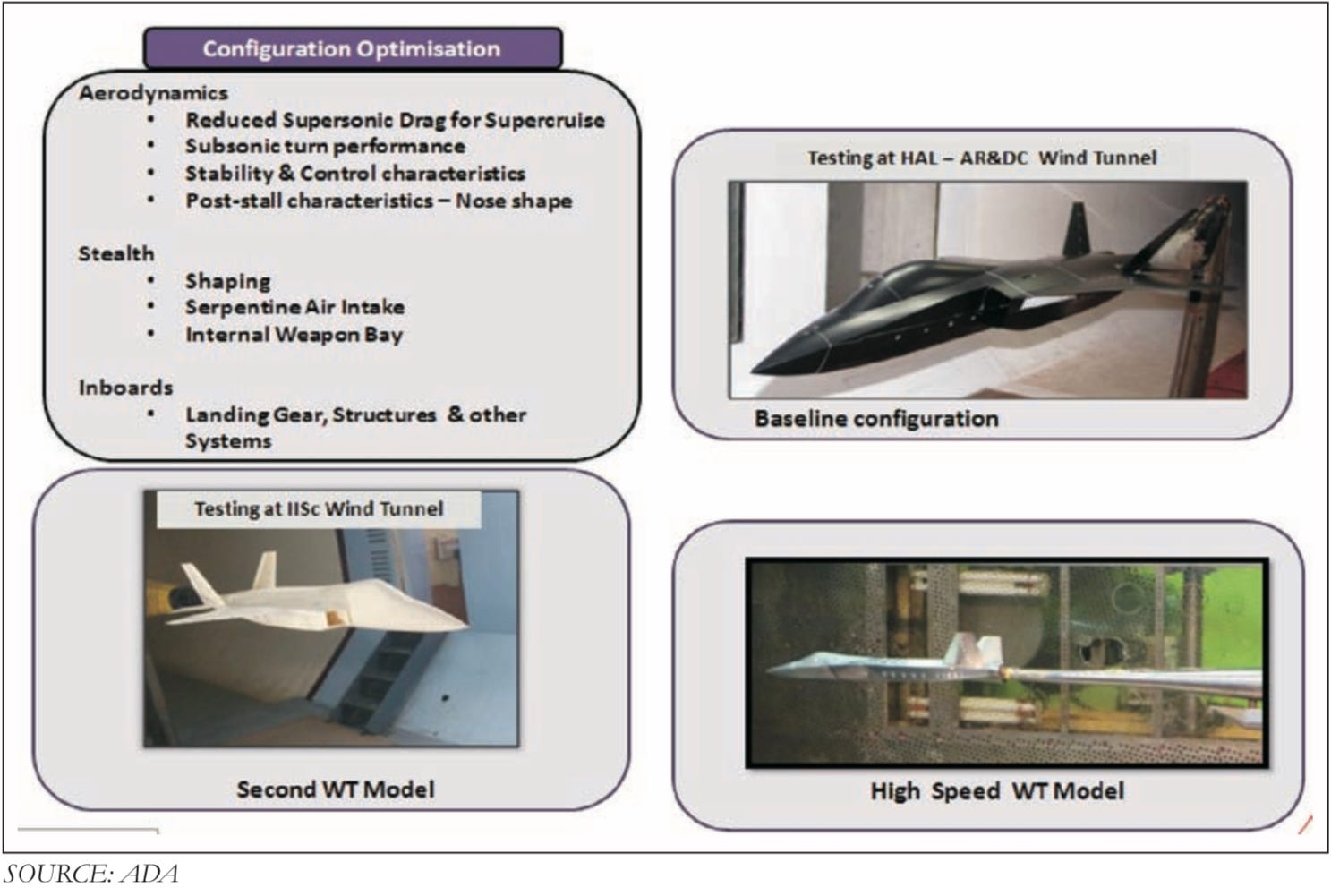
Wing tunnel testing models of earlier designs of AMCA

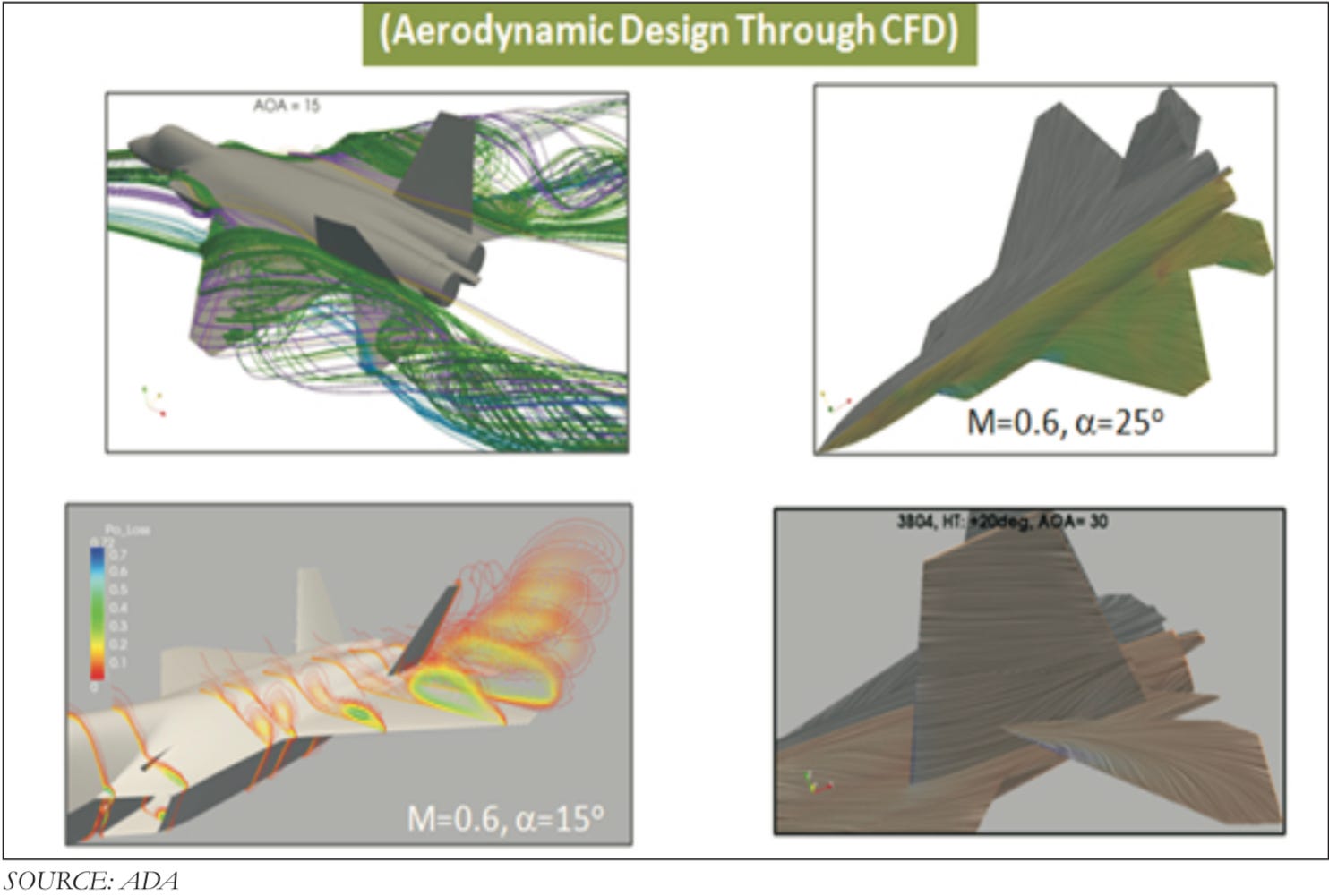
Modern fighters require excellent inlet/engine adaptability under wide flight conditions, taking into consideration the low radar cross section (RCS). The DSI, also referred to as the Bump inlet, provides this solution. A three-dimensional surface, or a bump, functions as a compression surface on the surface of the fuselage which creates a pressure distribution that pushes boundary layer air away from the inlet. The bump inlet separate the boundary layer by the high pressure zone generated by a 3-demensional bump before the inlet. The inlet cowl lips are designed to allow most of boundary layer flow to spill out of the aft notch.
The DSI structure complexity is greatly reduced by the removal of moving parts, a boundary layer diverter and a bleed or bypass system thus decreasing the aircraft’s empty weight, production cost, and requirements of maintenance-supporting equipment. Furthermore, by eliminating the surface discontinuity of the diverter, the forward sweep cowl lips and the S-shaped duct, which house the mental blades within the engine’s compressor, the bump can efficiently decrease the RCS.


Example of DSI Intakes, notice a bump in the intake without a splitter plate, above is TEDBF’s and below is the AMCA’s DSI Intake.
Trapezoidal wings reduces the air drag at higher mach thus giving the aircraft the ability to supercruise. Also it provide a better handling at subsonic speed than other delta wing aircrafts, which makes it suitable for ground attack roles too.
Relaxed static stability will give increased maneuverability to AMCA. Greater stability leads to lesser control surface authority, therefore a less stable design will have a faster response to control inputs. A less stable aircraft requires smaller control deflections to initiate maneuvering; consequently drag and control surface imposed stresses will be reduced and aircraft responsiveness will be enhanced.

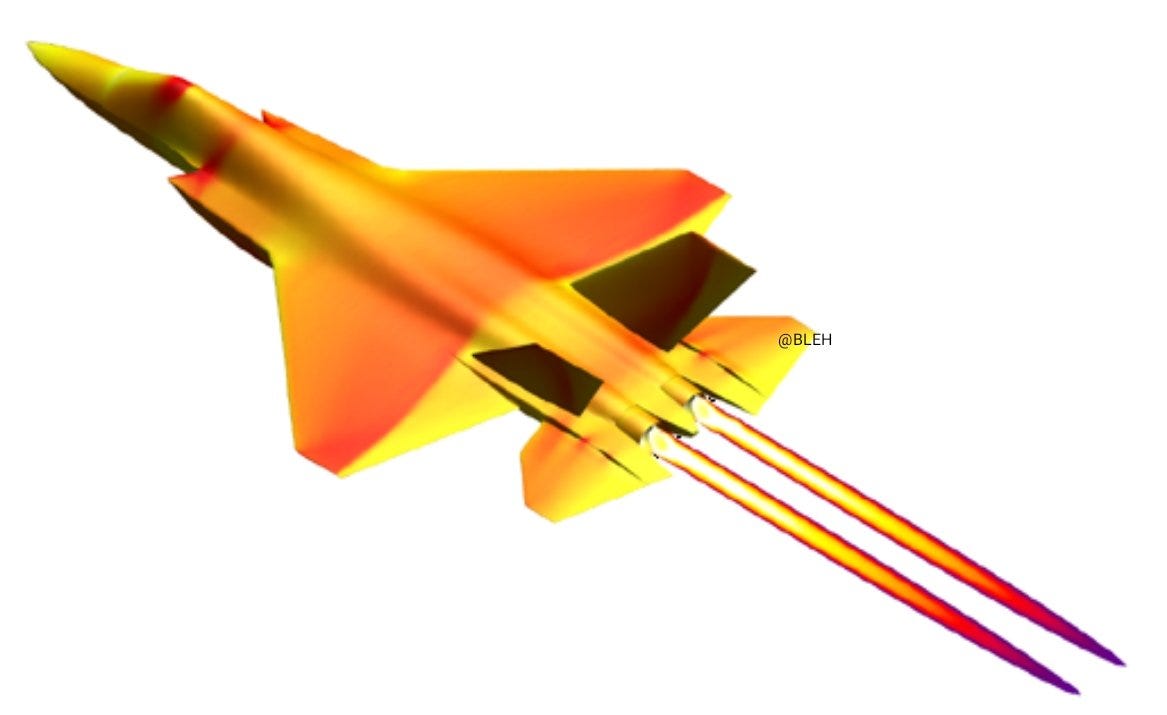
Advanced Medium Combat Aircraft


Fibre Optic Cables
The quadruplex digital Fly-by-light system of the aircraft employs an advance next-generation distributed digital flight control computer (DDFCC) made by Aeronautical Development Establishment (ADE) comprising four computing channels, each with its own independent power supply and all housed in differently placed LRU. The DFCC receives signals from a variety of sensors and pilot control stick inputs, and processes these through the appropriate channels to excite and control the elevons, rudder and leading edge slat hydraulic actuators. DFCC provides Raising the wing flaps and ailerons on one side and lowering them on the other provided roll. The pelikan-tail fins are angled at 27 degrees from the vertical. Pitch is mainly provided by rotating these pelikan-tail fins in opposite directions so their front edges moved together or apart. Yaw is primarily supplied by rotating the tail fins in the same direction. The AMCA is designed for superior high Angle of attack (AoA) performance. Deflecting the wing flaps down and ailerons up on both sides simultaneously provided for Aerodynamic braking
Radar absorbing structures and radome, body conformal antennae surface hard aperture, flush air data sensors and frequency selective surface (FSS) radome are used to reduce radar detection. Stealth ability is enhanced by the use of microelectromechanical systems (MEMS) and nanoelectromechanical systems (NEMS) during the construction of the airframe and in the airframe and instruments. AMCA’s design prevents detection of the aircraft from L band, C band and X band radars. The aircraft’s thrust vectoring nozzle reduces infrared emissions to mitigate the threat of infrared homing surface-to-air or air-to-air missiles. Additional measures to reduce the infrared signature include special paint and active cooling of leading edges to manage the heat build up from supersonic flight.
The ADA indicates just such an S curve for the AMCA. This is achieved in two ways: with the internal weapons bay, and cockpit placed in front of the engines. This creates partial vertical masking. Partial horizontal masking is achieved by offsetting the alignment of air intakes. Theoretically, between the partial vertical and horizontal masking, the engines blades are fully concealed in the front hemisphere.

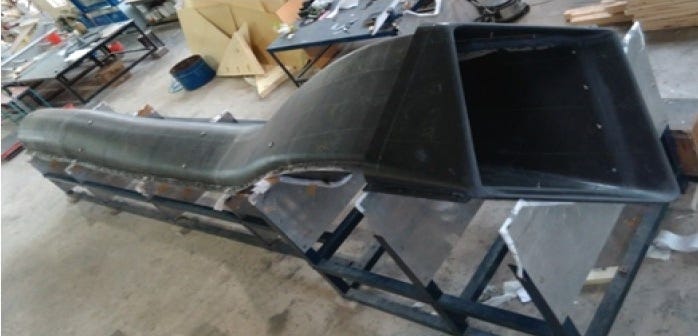
1:1 scale model of AMCA’s Serpentine Intake
The AMCA design indicates a broad central internal weapons storage space just near to the cockpit and air intakes. While one can speculate that this, combined with the vertical S-curve could mask the engine entirely, it is impossible to tell at this stage, given that the dimensions of the engine remain unknown and hence its volumetric and alignment implications, unclear. Moreover, the F-22 is a large, heavy fighter with much space for expansive configurations. It remains to be seen whether such a configuration will suit a more compact, lighter ‘medium’ fighter that the AMCA is going to be.

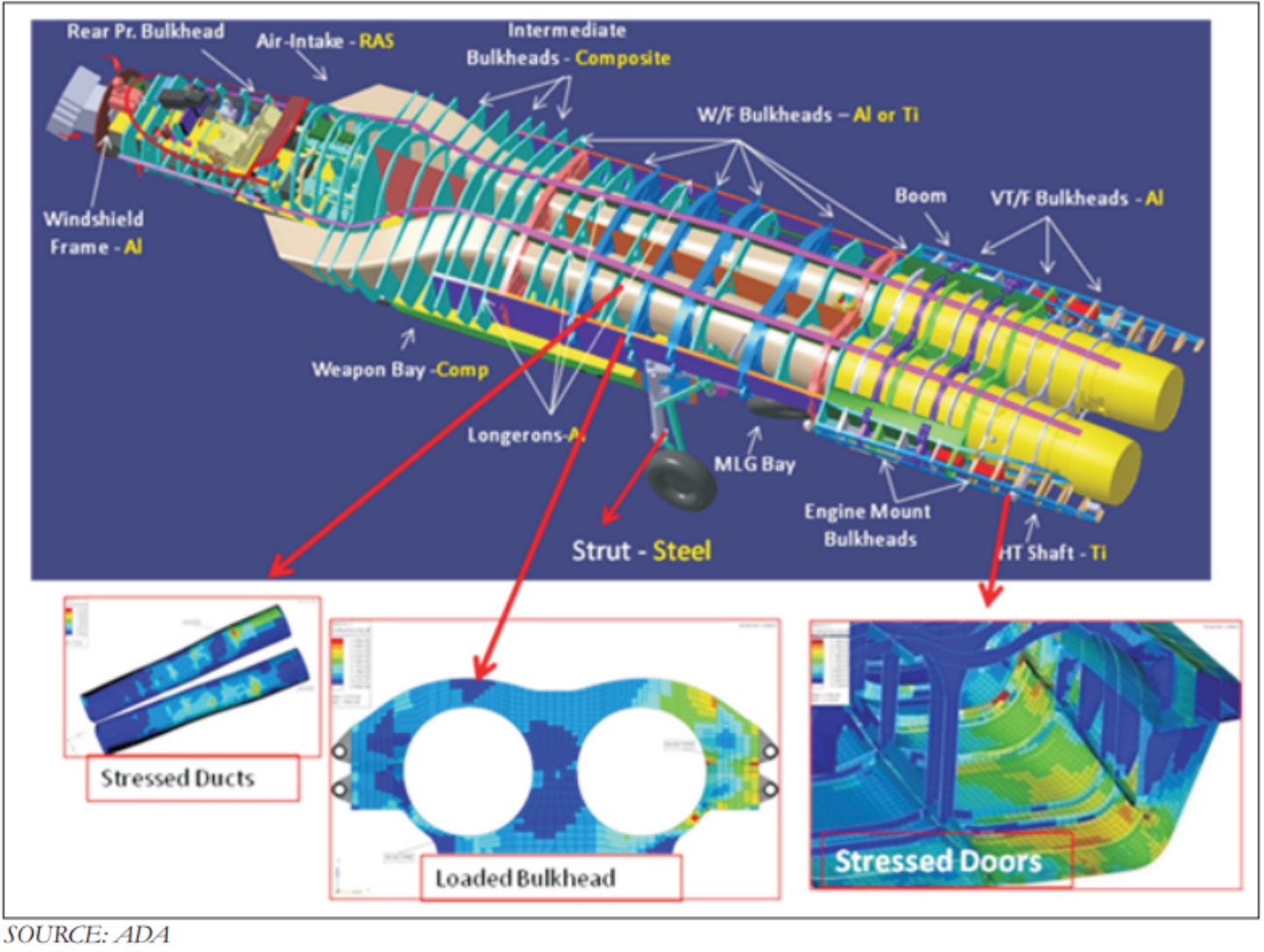
AMCA
The ADA claims the radome of the AMCA will be of ‘advanced construction’, presumably meaning that it will only allow the operating frequencies of the mated radar to transmit from the dome, while blocking other radars. This is a significant stealth measure since normal radomes are merely shaped for aerodynamic efficiency but freely allow radar waves through. This means adversarial radar waves ‘see’ past the radome onto a flat heavily radar reflective surface.
The cockpit & canopy presents a problem similar to the radome. Shaped for vision and aerodynamic efficiency, the jagged edges and facets of the cockpit within reflected radar waves increasing its RCS. Radar waves normally enter the cockpit, reflects of objects & possibly return to the radar and even the HMD of pilot itself contributes to RCS. India’s Light Combat Aircraft canopy is coated with a thin film transparent conductor of Indium Tin Oxide. The coating is thin enough that it has no adverse effect on pilot vision and can reflect the radar waves away from the radar antenna. An advanced version of this is also expected in AMCA. AMCA also proposes a frameless bubble canopy to increase its stealth profile, but manufacturing of this kind of canopy is really a challenge.

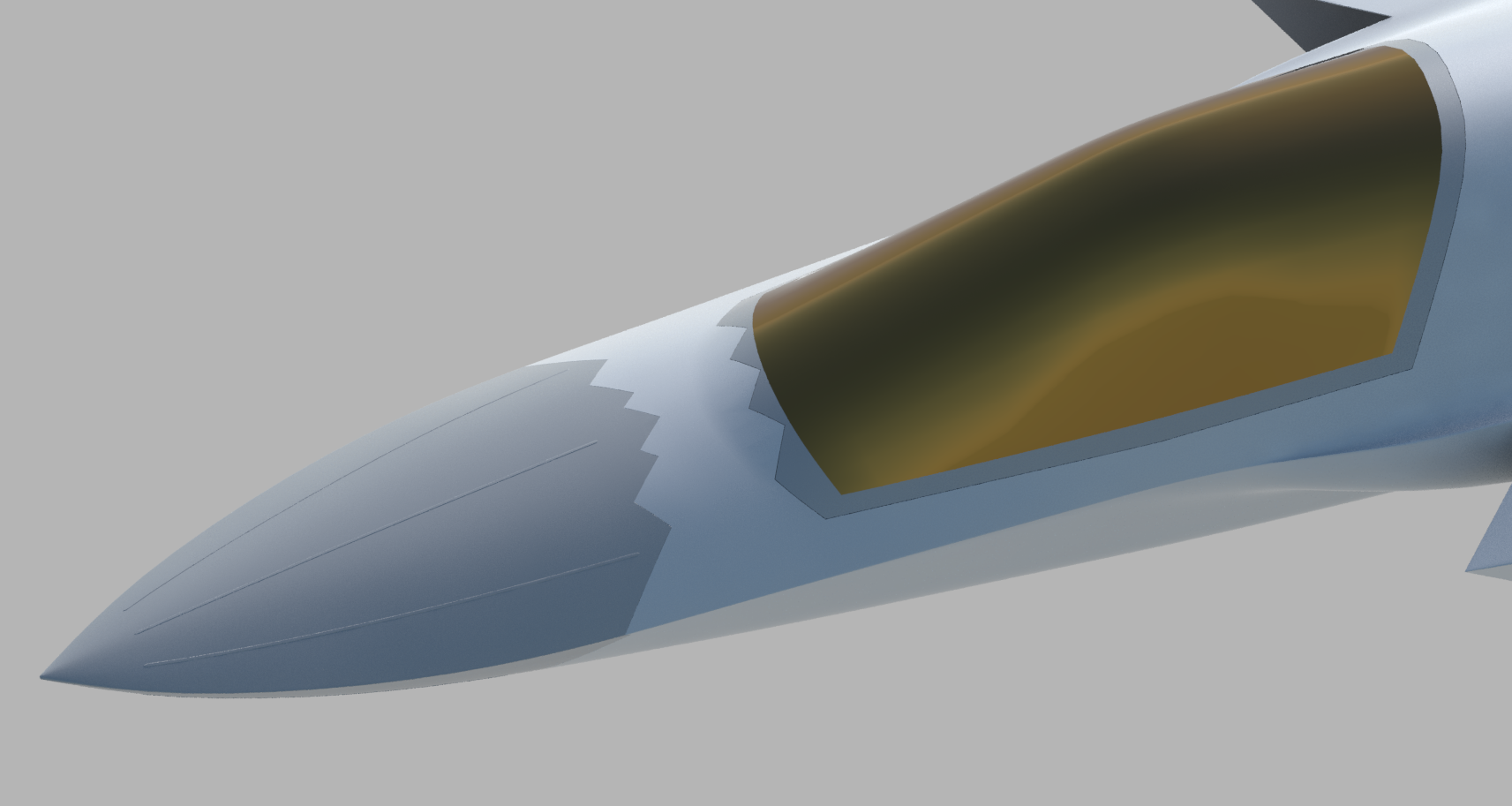
AMCA cockpit with a coating of Indium Tin Oxide.


An official infographic by ADA mentioning the use of ITO coating on canopy, and other salient features of AMCA. Also notice that this is the final frozen design of AMCA which may see only little airframe changes after testing.
Now we’ll talk about the rear aspect of the AMCA. Perhaps the most significant feature that detracts from stealth in this early design of AMCA is the circular engine exhausts. These are not just radar reflective but also erode stealth in the infra-red and other electro-optical detection arenas. In contrast, square exhausts, as seen on the F-22, reduce infrared signatures by up to 25 percent given the percentage increase in surface area of a square over a circle of the same dimensions. But this approach also reduced the thrust output of F22. AMCA will come with a 3D thrust vectoring nozzles hence a square exhaust with a zig-zag nozzle like F22 to reduce radar and IR signature is unlikely. This kind of nozzle is heavy and less maneuverable.

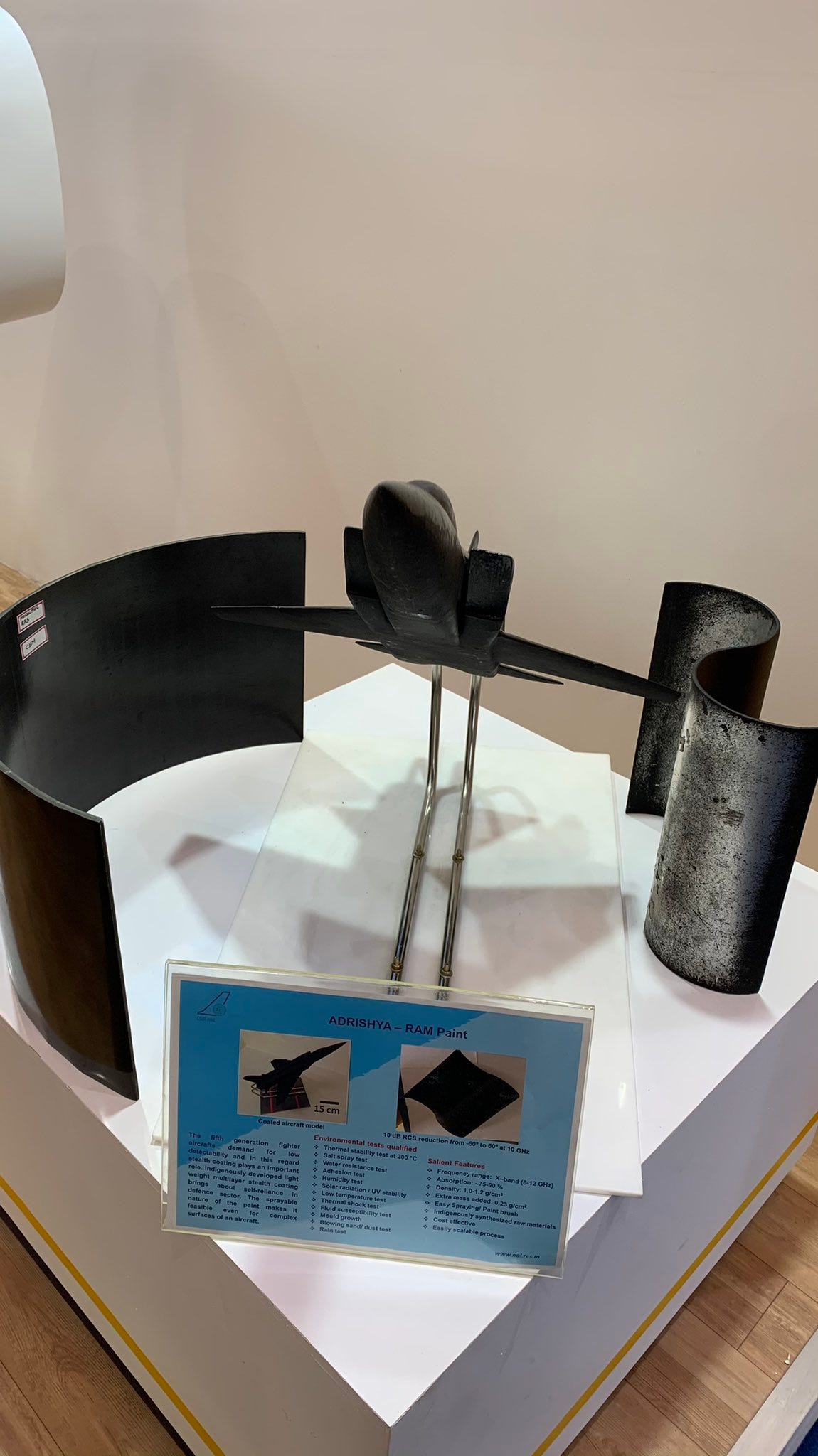
DRDO adrishya RAM Paint with details on the pic related to this Radar Absorbant Material

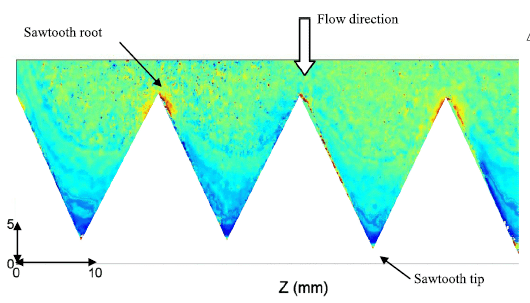
The geometrical of serrated saw-tooth trailing edge design
Example:

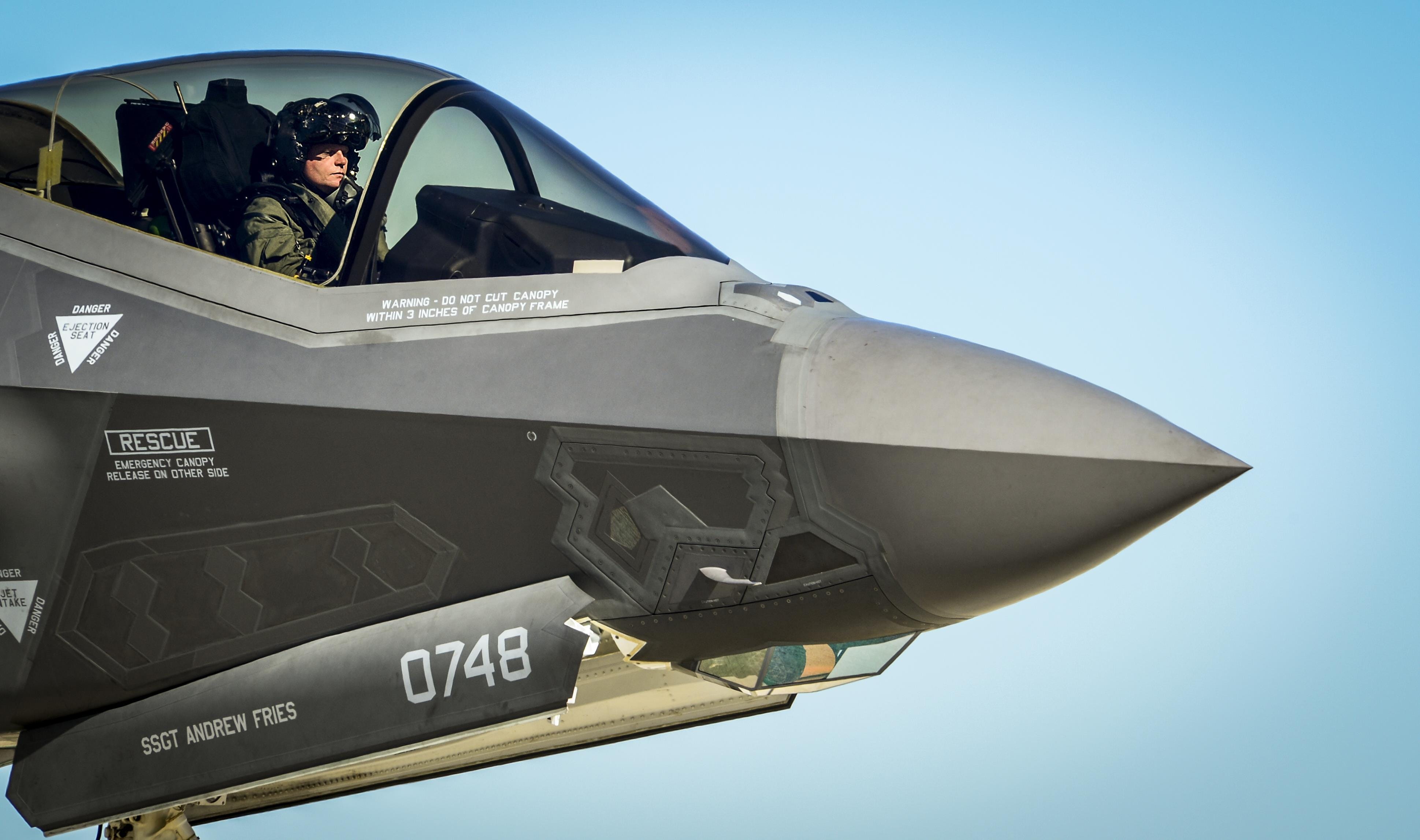

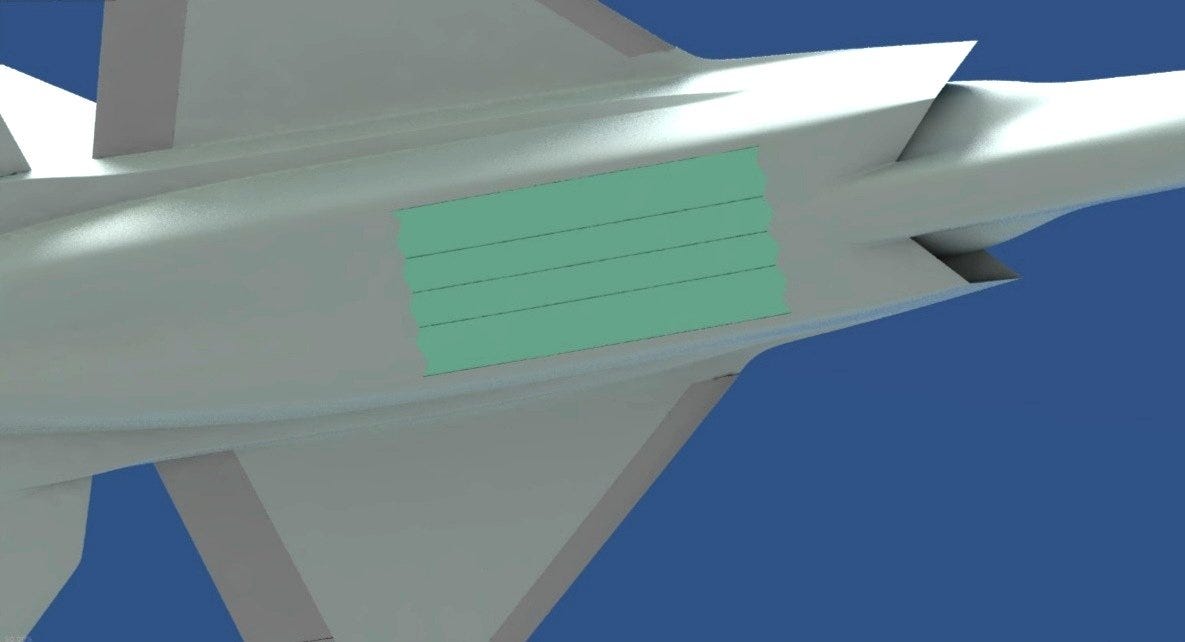
AMCA internal weapons bay
Perhaps the biggest design challenge for the AMCA’s weapons bays is the lack of a suite of indigenously produced weapons systems. As of now, the Beyond-Visual Range Air-to-Air missile (BVRAAM) Astra is just having 110km range which is a decent range but Astra MK2 and MK3’s arrival will make it a capable aircraft, also the DRDO Smart Anti Airfield Weapon (SAAW) is under trial and will soon be inducted.
The newer design shows two large bays with two bi-fold doors with a saw-tooth design to increase stealth characteristics, as opposed to previous graphics that showed a single large weapons bay. The implications for hull integrity.

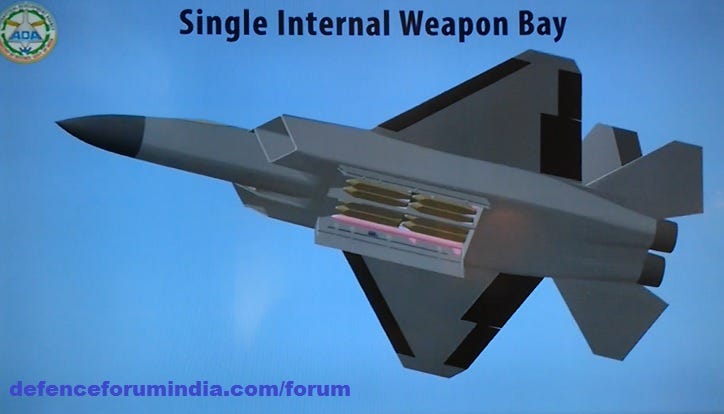
There is as of now no clarity whether the AMCA will have F-35 like EOTS or not, but it seems that ADA will do some improvisation for it.


F-35’s EOTS, a crystal like projection below the nosecone.
AMCA also comes with self protection jammer system to jam enemy radar guided missiles from both air and ground. Electronic counter measure systems to confuse the infrared guided missiles (DIRCM) and a radar warning receiver too added to detect enemy radar frequencies.
The Multifunction RF Sensor, which has broad spectrum agility, includes capabilities for electronic countermeasures (ECM), electronic support measures (ESM), communications functions, and possibly even microwave weapon functions. AMCA will be integrated from the cockpit to accompanying UAVs and UCAVs which will include DRDO AURA, DRDO Rustom through encrypted datalink connections.
During AeroIndia 2017 The members of a defence site named Livefist chanced upon the above slide that they found tucked away in a corner of the small Defence Avionics Research Establishment (DARE) stall in the DRDO pavilion.
While They’ve reported extensively on the AMCA’s intended stealth characteristics, including serpentine intakes and internal weapons bays, the slide you see here is, in Livefist’s view, the most significant and revealing set of details on the deep research being done in what is by far the most challenging part of the AMCA’s design: active phased array technology. This comprises the spread of separate sensor elements embedded across the AMCA’s airframe in a way that consolidates overall stealth and lowers all aspects of the aircraft’s final signature, while making use of that very spread to provide a heightened degree of sensor coverage and domain awareness to the pilot. (Think of the spread like a dashboard camera that’s actually a network of cameras situated all around the car, providing the driver with a wide sweep view of what’s happening around the vehicle).

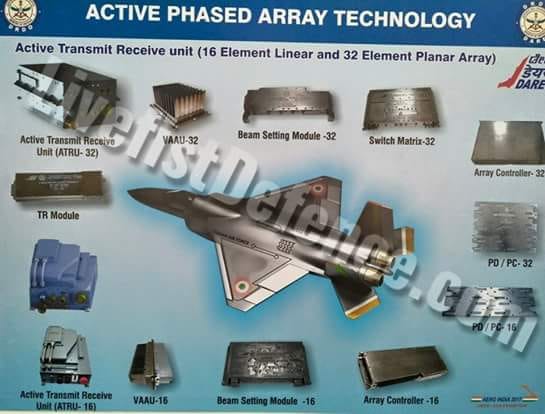
AMCA’s Active Phased Array Technology by DRDO
Antenna elements as part of the phased array spread will come up for their first torture test with the full scale AMCA mock-up soon in Hyderabad. And getting it right is non-negotiable, especially since this is technology no company or country will conceivably share.
The 16 element linear and 32 element planar array will either segue smoothly into the functionality of stealth or stick out sorely and make the AMCA significantly more visible across electromagnetic spectra. In other words, it isn’t just how well these little elements work separately, but how they work together — and above all, how well they are housed in the body of the aircraft so they don’t interfere with stealth.
‘Make or break technology’ in the words of a DARE scientist who spoke on condition of anonymity to Livefist. Antenna architecture, overall computational electrodynamics and the true integration of these elements with an airframe design that’s still in flux means there’s huge pressure to get it right. Indeed, this is research that could have spin-offs for the LCA Mk.2 programme as well.
The slide you see here is affirmation that the most significant elements that will potentially make the AMCA a true fifth generation machine are deep in the works. This is research that will imbue the performance of India’s Ghatak UCAV too, considering the large amount of basic technological R&D feeding jointly into both programmes (as Livefist reported earlier, the AMCA and Ghatak are actually a joint lead-in project).
Tech partnerships on the AMCA will likely involve offsets-driven sensor packages and broad consultancies in the post-design phase, including flight test and airborne empirical studies new to India since this will be the country’s first stealth aircraft built at home. What those partnerships won’t include are the driving forces that compel the very stealth that the AMCA hopes to sport.

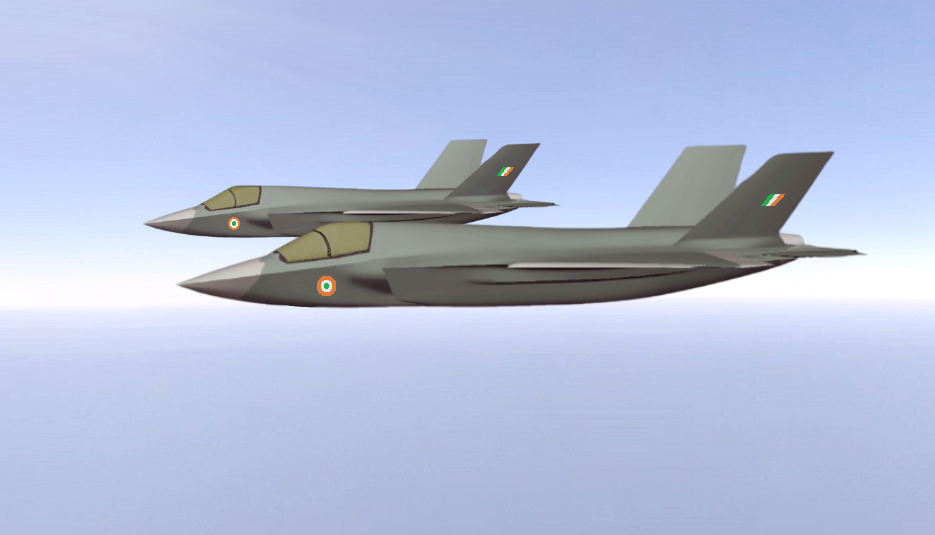
Advanced Medium Combat Aircraft

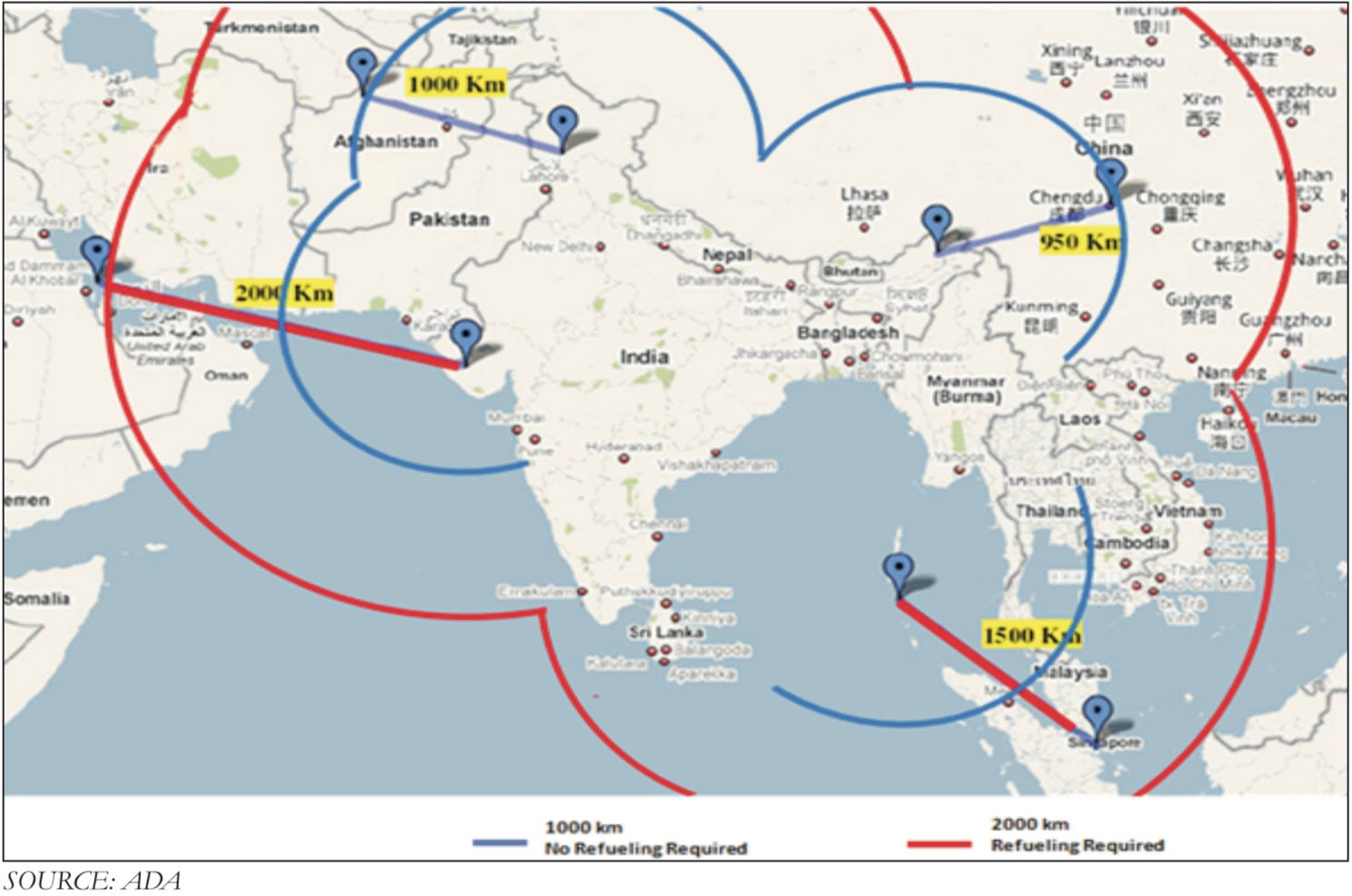
The Combat Radius of AMCA
The ADA is designing the AMCA with an internal fuel capacity of 4 tonnes to exclude the necessity of carrying outboard fuel tanks which significantly compromise the aircraft’s stealth properties. The ADA estimates that the AMCA will have a combat radius of 1,000 km on these 4 tonnes of internal fuel. However it will also be equipped with air-to-air refuelling capability, increasing its endurance and operational radius as can be seen in the range arcs provided above with a retractable IFR probe for improved stealth characteristics.
AMCA will have vehicle management (including weapons), data fusion, decision aids, integrated modular avionics, internal carriage of weapons, signature control. The AMCA will have a quadruplex fly-by-light system. It makes AMCA more immune to electronic attacks (EMI-electromagnetic interference, HIRF –High energy radiated fields) and much better transmission speed and processing capabilities compared to conventional Fly-by-wire systems used mostly on all fighter aircrafts flying today. Fly-by-light also helps to reduce the weight of the aircraft. The higher band width of fly-by-light is very useful in controlling the aircraft at high speeds. Higher bandwidth ensures higher data transfer rate, therefore pilots command passes rapidly from aircraft cockpit to control surfaces which ensures smooth aircraft maneuvering even in high speeds especially AMCA is designed as an aircraft with super cruise capability the advantage of Fly-by-light is enormous and also improves the safety margin of AMCA.
Another major advantage of Fly-By-Light is , AMCA will use composites to make its body , use of composite materials in aircraft structures will decrease the effect of electronic attack of enemies cos composites are less suspected to EMI than metal structures .Consequently, Fly-by-wire are subjected to greater electrical interference which can degrade performance. But optical pulses transmitted by FBL system are unaffected by the much lower frequency electromagnetic waves that characterize the Electronic attack threat.
AMCA will have another feature called self repair / self protection. Self repair will achieve with the help of self-diagnosing and self-healing systems that distribute the work load to other systems from affected to non-affected systems. Self protection would be provided with the use of nanotechnology to produce advanced composite materials designed to have a higher resistance to damage and therefore reducing the damage surface area. The aircraft uses Self Repairing Flight Control Capability to automatically detect failures or damage in its flight control surfaces, and using the remaining control surfaces, calibrate accordingly to retain controlled flight. The use of adaptive neural networks would be a key feature in self healing and self repairing they can record all the faults occurred and also can learn from the previous faults.


Advanced Medium Combat Aircraft
The AMCA will host a new generation GaN (Gallium Nitride) based Shared Aperture AESA Radar with for superior detection and performance. State owned LRDE had initiated a project to develop a small size air borne X band GaN based AESA radar for AMCA. LRDE already shows a model of AESA radar in last year’s Aero India exhibition

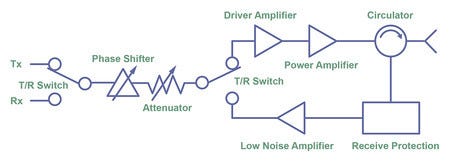
Simplified block diagram of a T/R module
Gallium nitride, or GaN, is a semiconductor material with high breakdown voltage and high electron mobility. Similar to gallium arsenide (GaAs), the high electron mobility enables high frequency operation; unlike GaAs, however, the high breakdown voltage of GaN supports high electric field strength in the device. By operating at a higher voltage, GaN-based amplifiers are able to provide a much higher output power in a smaller space.
Using GaN technology in the design of the TR module’s power amplifier maximizes the transmit output power while minimizing the physical size. In addition to shrinking the size of the amplifier die, the use of high-power GaN reduces the need to use many lower-power devices. Since the passive combining networks that are used to combine multiple die are large and introduce loss into the signal path, having fewer of them improves the power density in the TR module.
The higher bias voltage of GaN offers an additional benefit at the circuit level. Since power is the product of voltage and current, for a constant power, the higher bias voltage of GaN leads to lower current. When the current is reduced, the loss in the bias circuit is also reduced, which improves the efficiency of the amplifier.
So in short Gallium Nitride (GaN) based AESA radars have better transmitting as well as receiving capabilities compared to a Gallium Arsenide (GaAs) based AESA radar which are commonly used in most of the fighter aircrafts with AESA radars flying today. Better transmitting capabilitiy means that the GaN based radar can have a significantly much higher range compared to a standard GaAs based AESA radar. Better receiveing capabilities means that it can detect even weaker radar signals which reflect back from target which means that it is easier for GaN based radars to detect Stealth Aircraft compared to a GaAs based AESA radar. The one DRDO is working on is a Shared Aperture Radar.
Primary requirements of a shared aperture radar are
LRDE developed a 16x16 element planner array antenna to investigate the technology. The small antenna array provided sufficient functionality to study associated radiation characteristics and trade offs. Since the primary requirement is wide bandwidth ( >50% of centre frequency) and dual polarisation, it prevents the use of the common type of antennas such as microstrip patches, printed dipoles, and open-ended dipoles as the bandwidth of these antennas is <=30% of center frequency.
Therefore, TSA (Tapered slot antenna) AKA Vivaldi flared notch antenna was selected. TSA antenna meets all the requirements mentioned above. It has symmetrical radiation pattern, high gain, and wide bandwidth. The most recognisable feature of the TSA antenna is its V-shaped flared notch. The narrower region of the notch radiates RF signals of high frequency, whereas broader part radiates RF signals of low frequency.The geometry of Tapered Slot Antenna(TSA)/Vivaldi Antenna.



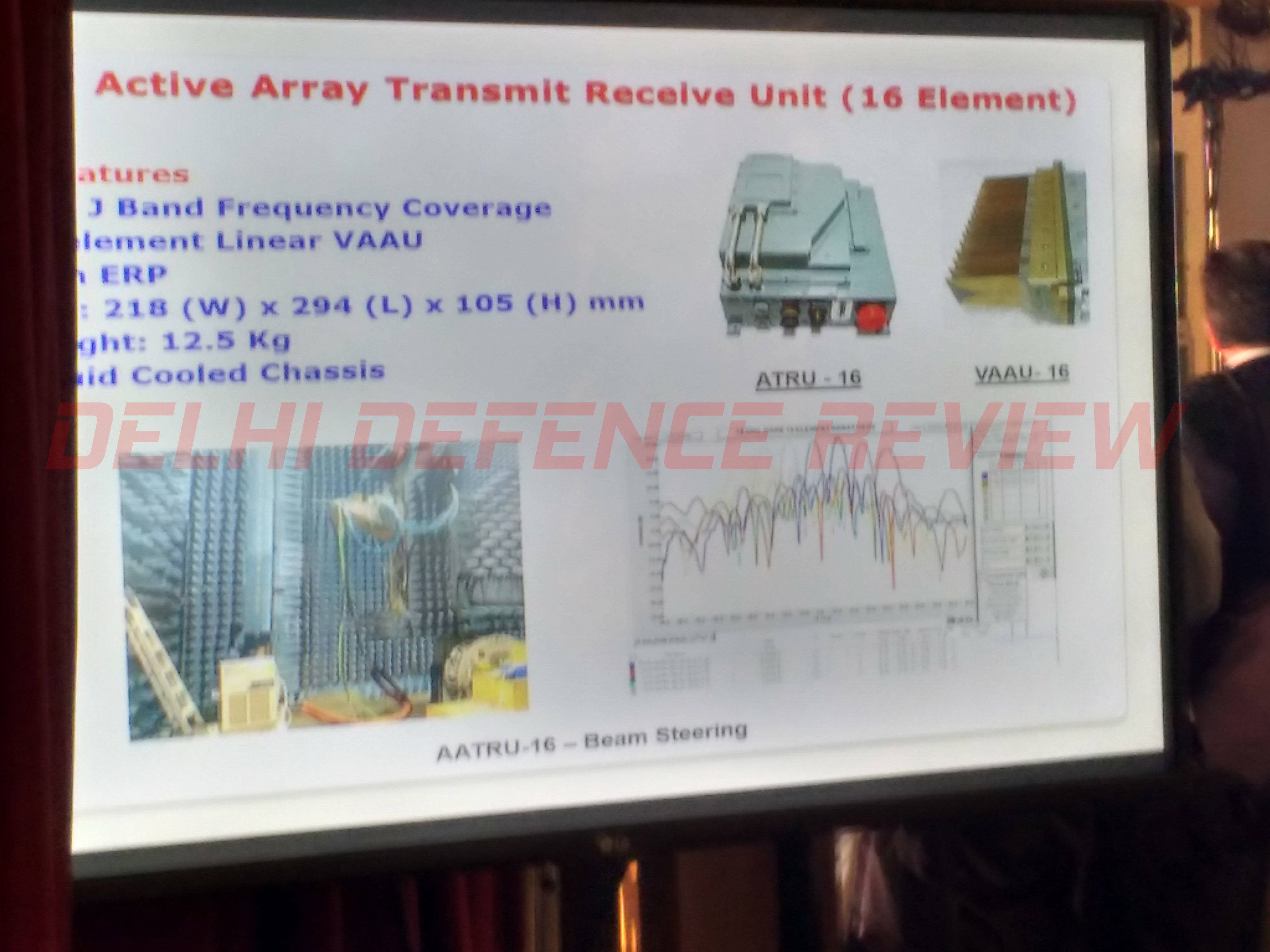

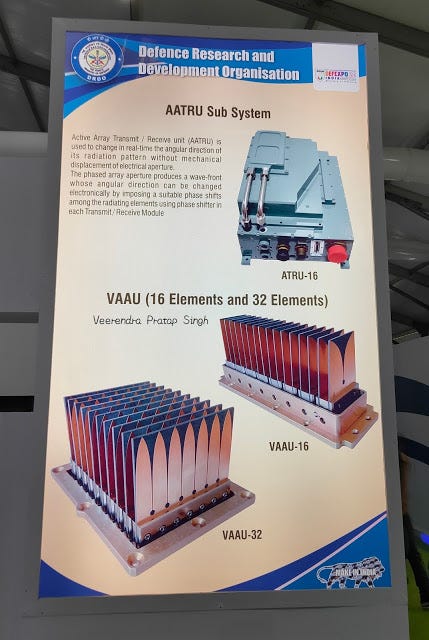
DRDO has invested a lot of money in gallium nitride MMIC development projects and there are plans to set up a state of the art GaN foundry at IISc. It’s likely that TR modules of AMCA’s radar will use GaN-based solid-state RF amplifiers. GaN MMIC combined with latest LNA tech will greatly enhance detection range (greater than 200km for a 1 sqm RCS target). It also eliminates the requirement of a liquid coolant circulation based cooling system. Existing radars in IAF service use traveling wave tube amplifier (TWTA) and slotted waveguide antenna (planer array of slots). The bandwidth of these radars is relatively narrow (600–800MHz). More advanced radars such as DRDO Uttam and EL/M-2052 have a much wider bandwidth (1–3GHz). A wideband radar using TSA radiating element may have a bandwidth no less than 5 GHz and an enhanced probability of detection+classification and it’s much more difficult to jam. The associated wideband/multi-channel MMIC is however very complex and expensive. It is in an early development stage and the technology in question is futuristic. If this radar tech indeed goes to the AMCA, then the development period is perfectly aligned with the timeline of the aircraft being inducted into the IAF i.e around 2035 when first Production AMCA will be inducted into Indian Airforce.

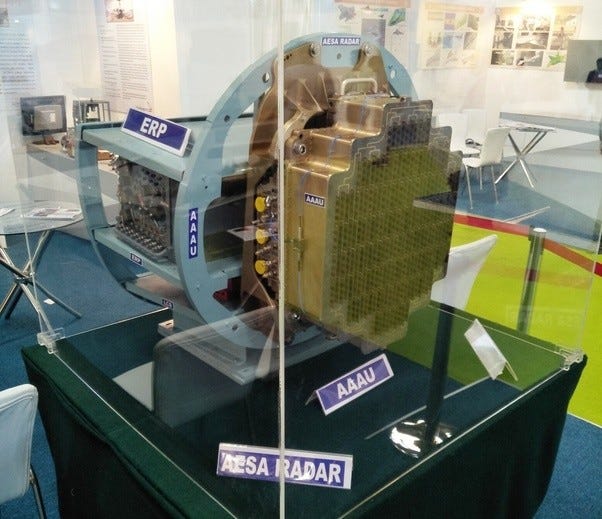
DRDO’s UTTAM GaAs based AESA Radar

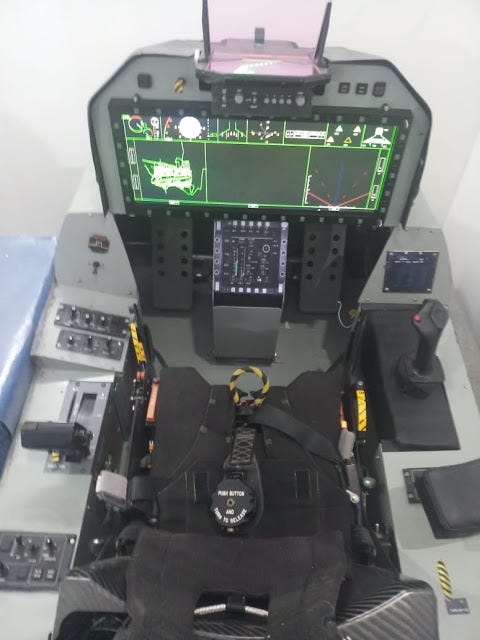
A mockup of AMCA’s cockpit, with controlling stick on the side enabled with HOTAS and a wide area display.
Cockpit features are
1. A wide area display (WAD). Touch Screen interface supported by voice commands.
2. A central SMFD for redundancy of critical information.
3. All digital display HUD.
4. A side stick controller on the right side. And a throttle stick on the left.
5. ITO coated single bubble canopy with all round visibility.

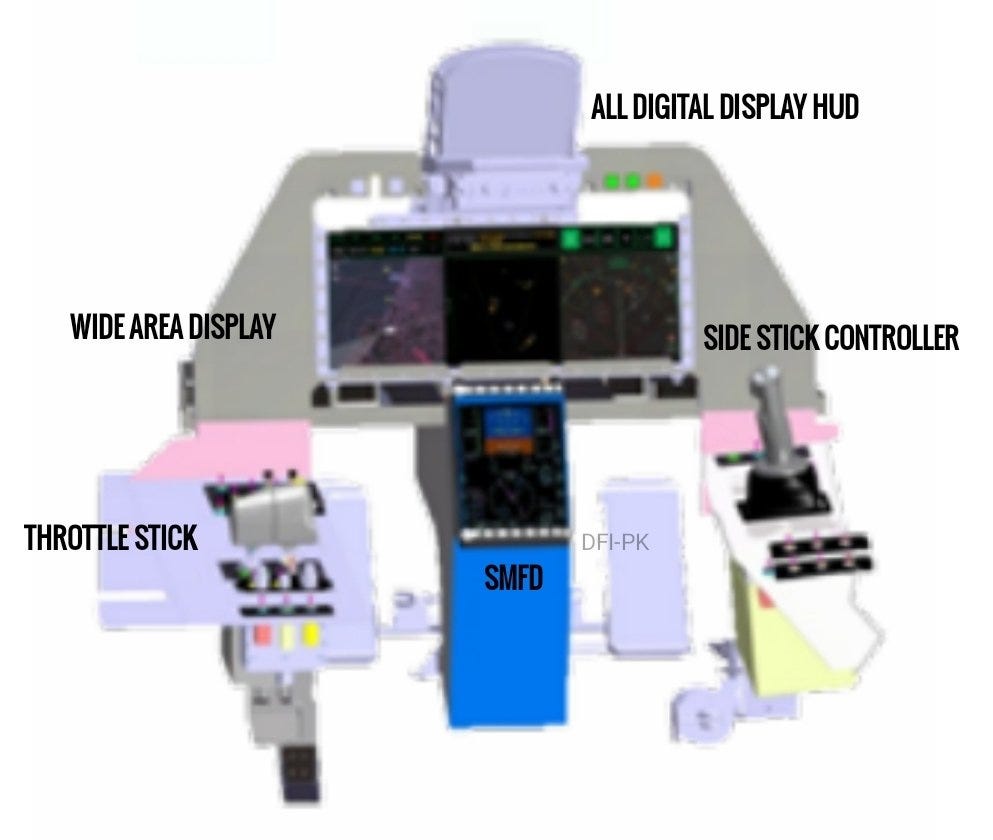
The primary flight controls are arranged in a hands-on-throttle-and-stick (HOTAS)-compatible configuration, with a right-handed side-stick controller and a left-handed throttle. HOTAS will give more control over air craft, because they give independent analog control over all three rotational axes (Pitch, Roll, and Yaw) as well as thrust. AMCA’s cockpit has a secondary “get-you-home” panel providing the pilot with essential flight information in case of an emergency
The pilot interacts with on-board systems through a multi-functional keyboard and several selection panels. The Head up Display and helmet-mounted display and sight (HMDS), and hands-on-throttle-and-stick (HOTAS) controls reduce pilot workload and increase situation awareness by allowing the pilot to access navigation and weapon-aiming information with minimal need to spend time “head down” in the cockpit.

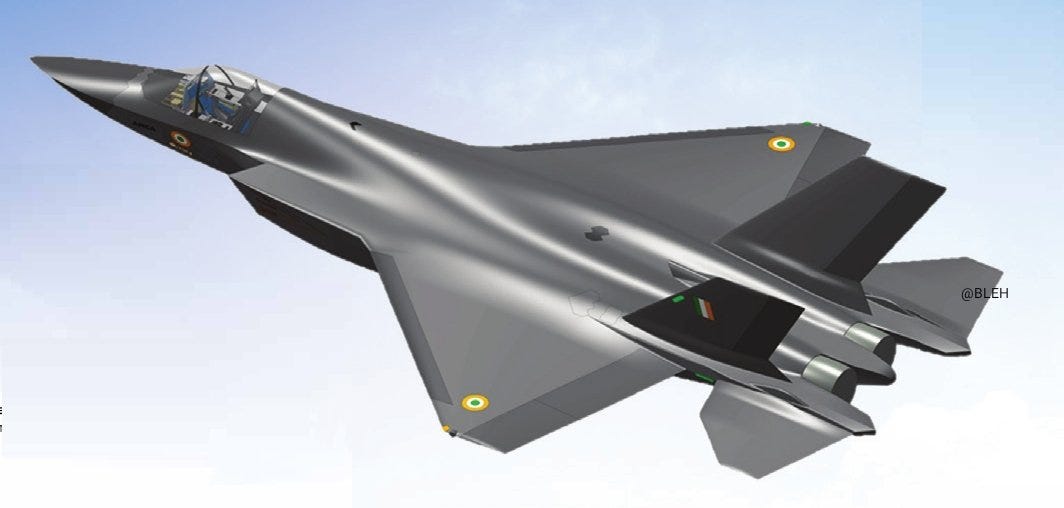
Advanced Medium Combat Aircraft
Initial production variants will come with enhanced General Electric GE-F414 engines.


General Electric GE-F414
Defence Electronics Application Laboratory (DEAL) has designed and developed a next-generation network-centric aircraft management system (including weapons) including various features such as data fusion, Cooperative Engagement Capability, decision aids, integrated modular avionics, and intern signature control with sharpening for low observability. The aircraft will use integrated modular avionics for real time computing, and the fiber optic cables used on the aircraft feature photonic crystal fibres technology for faster exchange of data and information. Unlike the HAL’s previous fighter aircraft, the LCA Tejas, which has a digital flight-control computer and hydraulic controllers, the AMCA has a distributed processing system employing fast processors and smart subsystems and will be electronically controlled via a “central computational system connected internally and externally on an optic-fiber channel by means of a multi-port connectivity switching module”. This results in using the IEEE-1394B-STD a departure from MIL-STD-1553B data-bus standard. The connectivities will be switched by means of a multiport switching matrix, with data speeds of 400MB/second.
The AMCA’s EW suite is developed by the Defence Avionics Research Establishment (DARE) with support from the Defence Electronics Research Laboratory (DLRL). This EW suite includes a radar warning receiver (RWR), Missile Approach Warning (MAW) and a laser warning receiver (LWR) system, Infrared & Ultraviolet Missile warning sensors, self-protection jammer, chaff, jaff and flare dispenser, an electronic countermeasures (ECM) suite and a towed radar decoy (TRD).

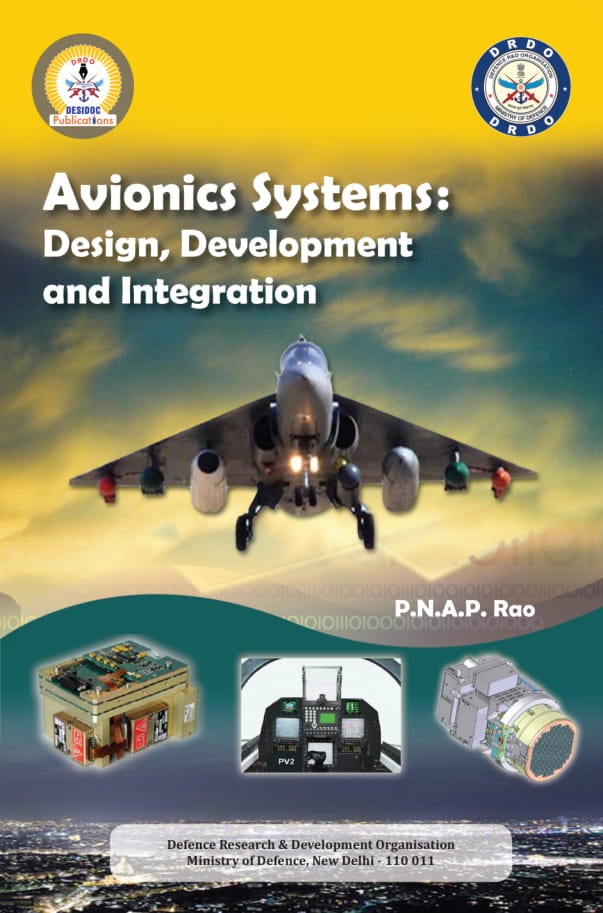
DRDO


The advantages of the HEMT include its high carrier concentration and its higher electron mobility due to reduced ionized impurity scattering. The combination of high carrier concentration and high electron mobility results in a high current density and a low channel resistance, which are especially important for high frequency operation and power switching applications.

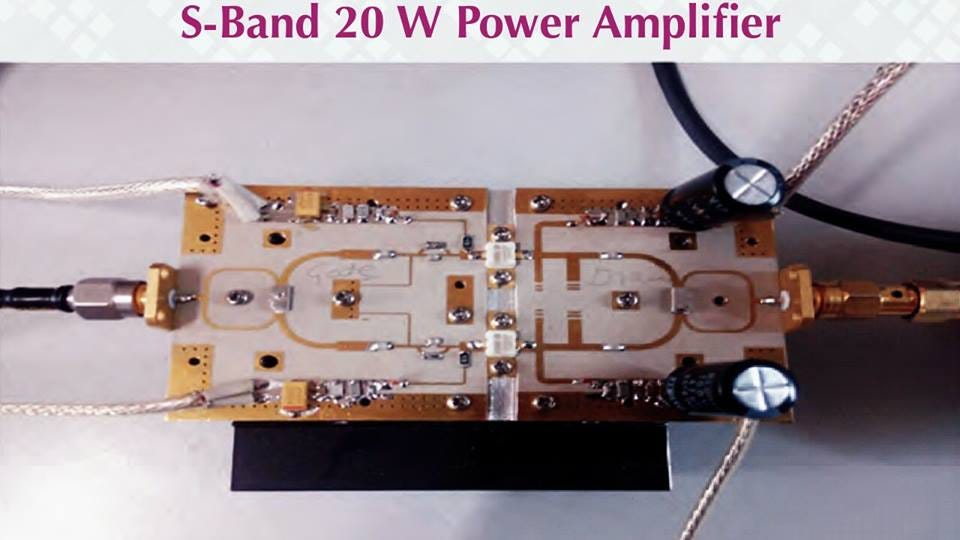

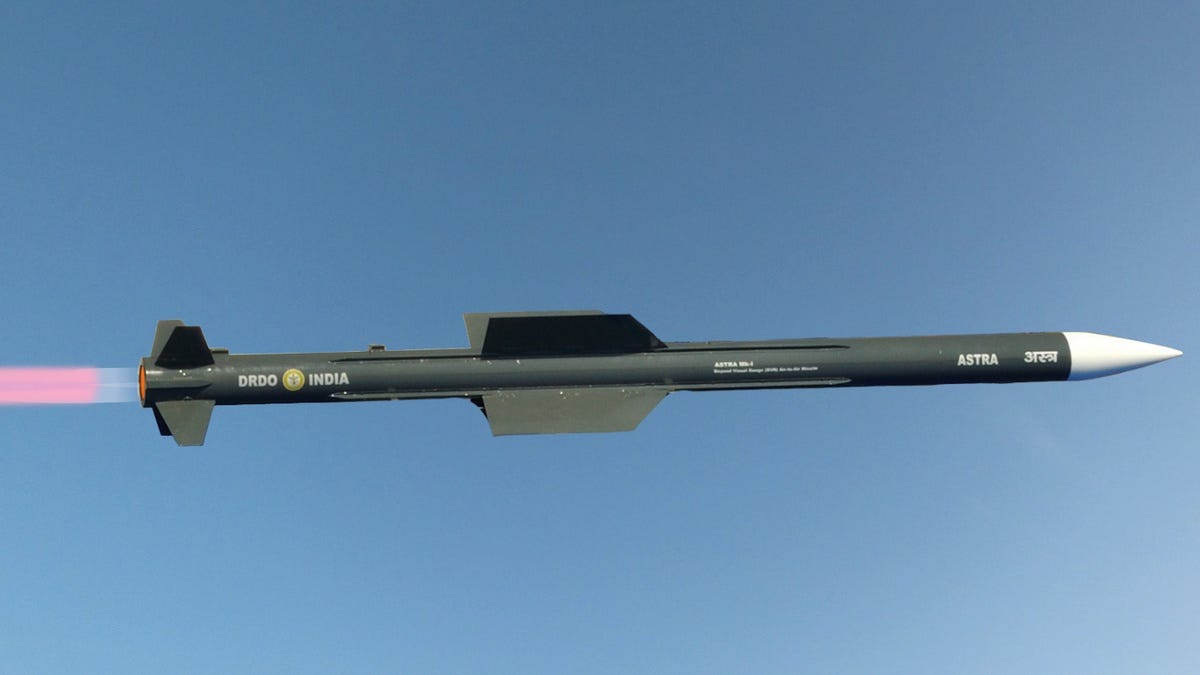
DRDO Astra
2. Astra MK2 (Under Development) — 160km range


3. Astra MK3 (Under Development) — 350km range

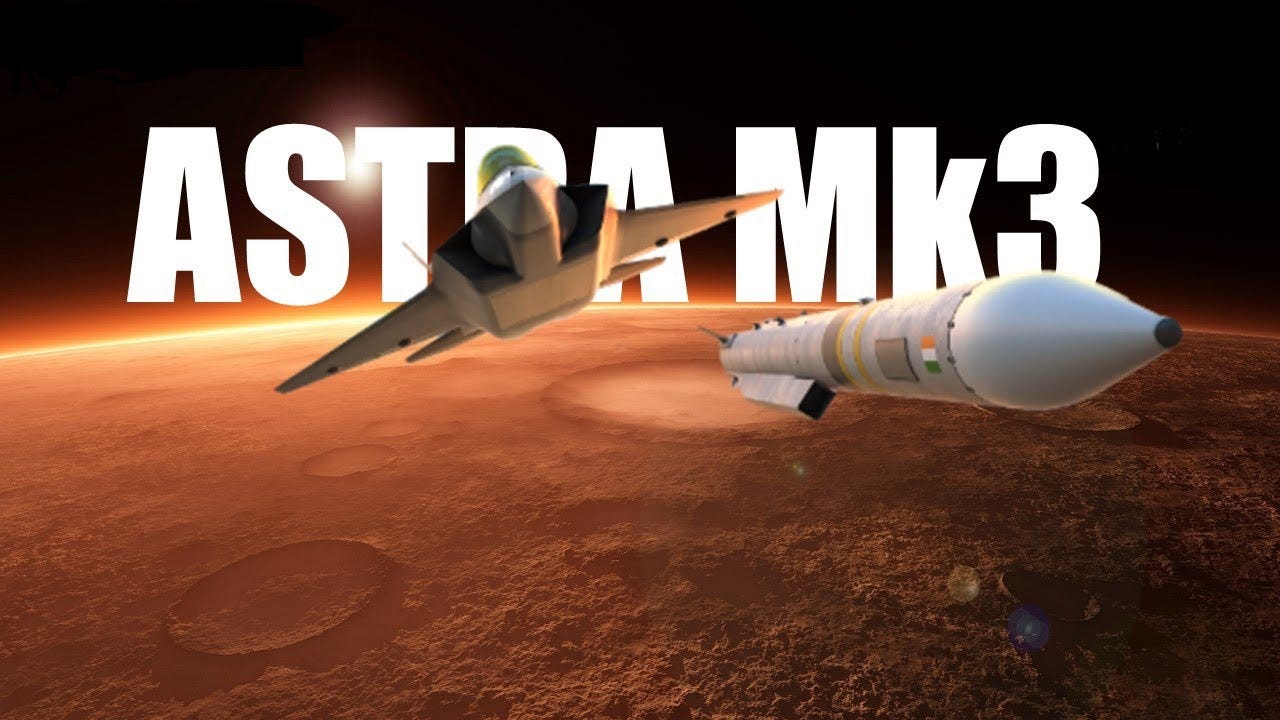
4. Astra IR (Under Development) — 80km range

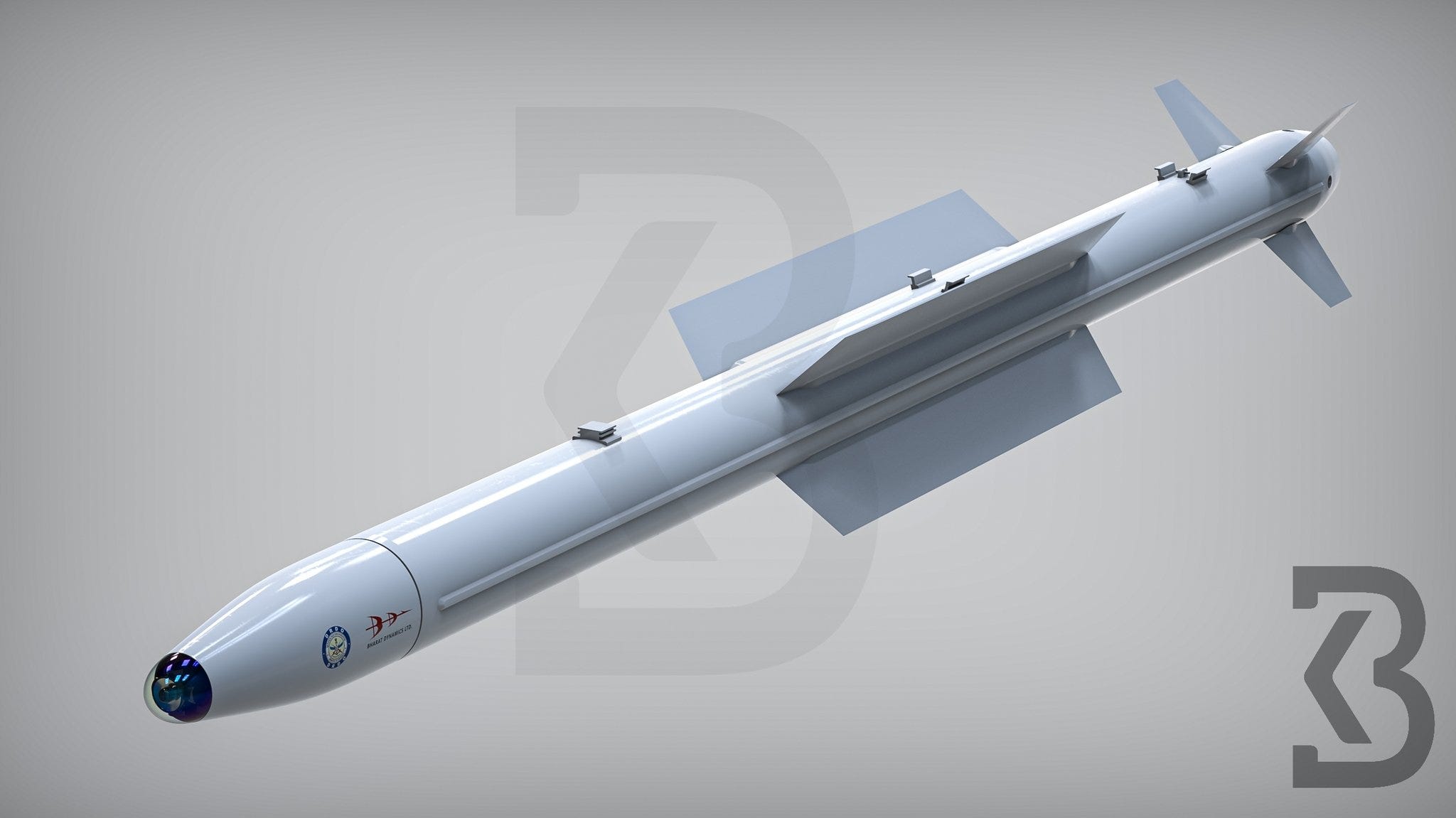


DRDO Smart Anti-Airfield Weapon
2. DRDO Long range glide bombs

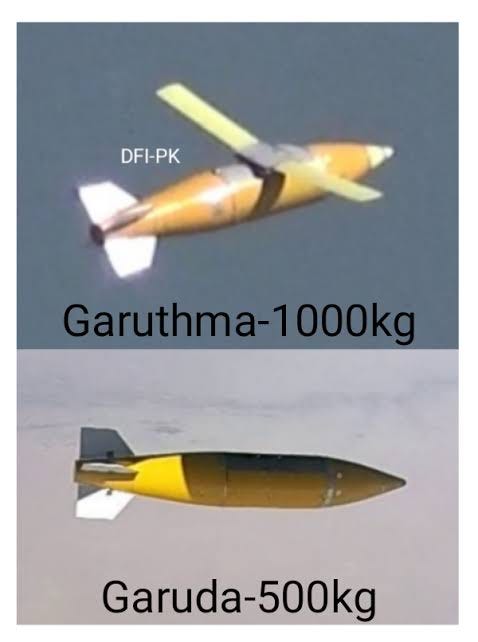
3. DRDO HSLD (High Speed Low Drag) Bombs

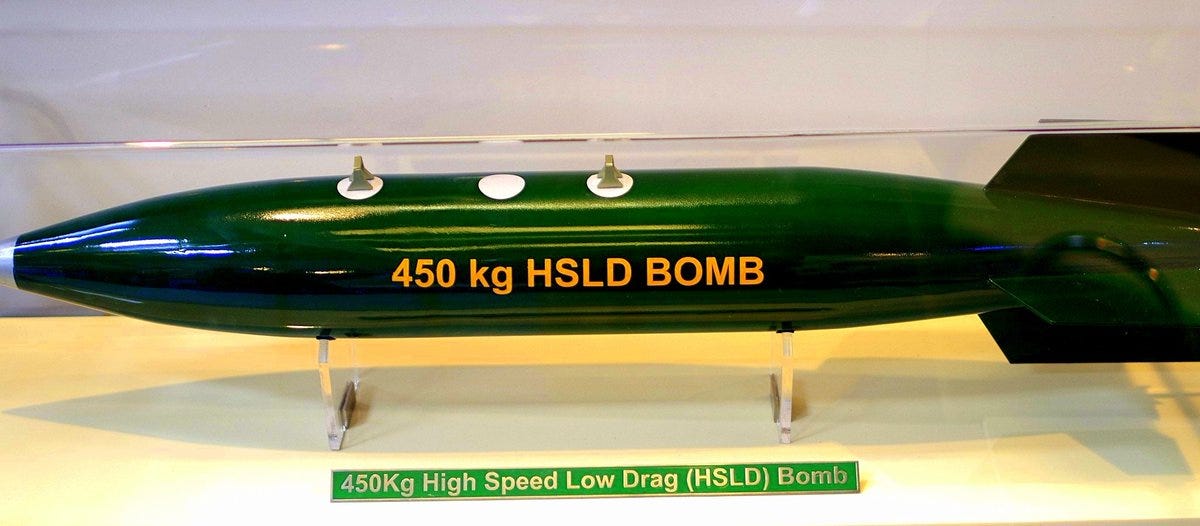

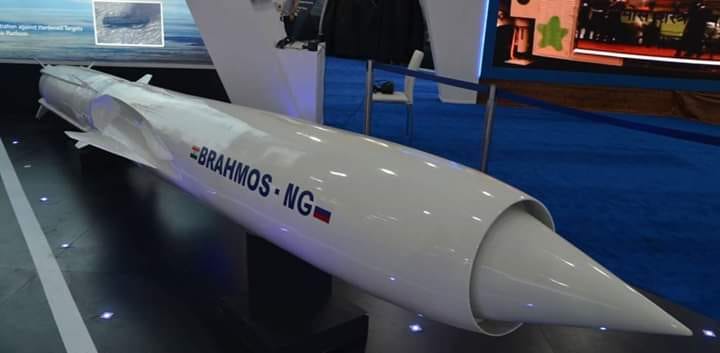
BrahMos-NG
2. BrahMos-II Hypersonic — 1000km range (Under Development)(Non-stealth mode).

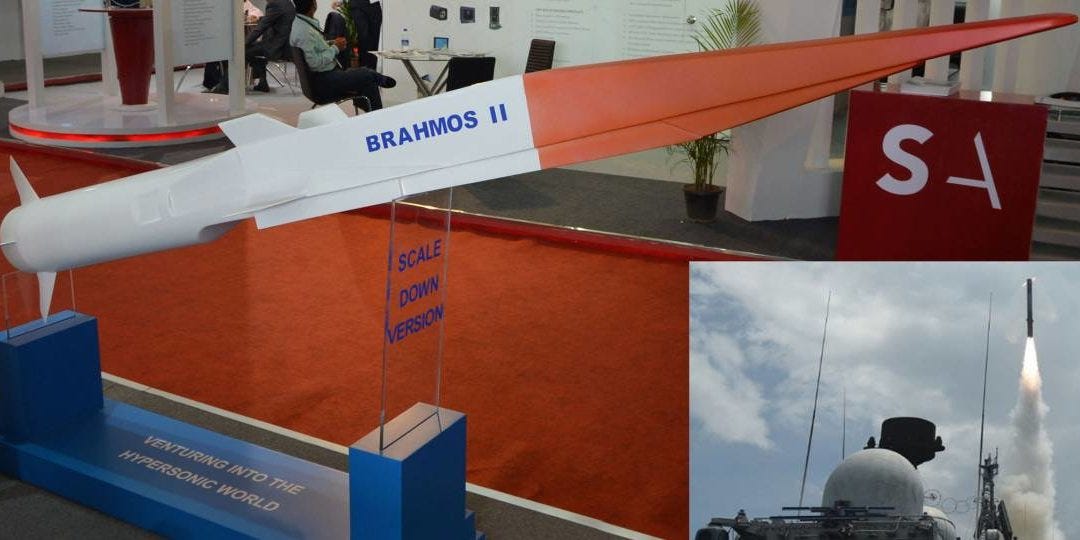
BrahMos-II
3. SCALP-EG — 560km range (Non-stealth mode)

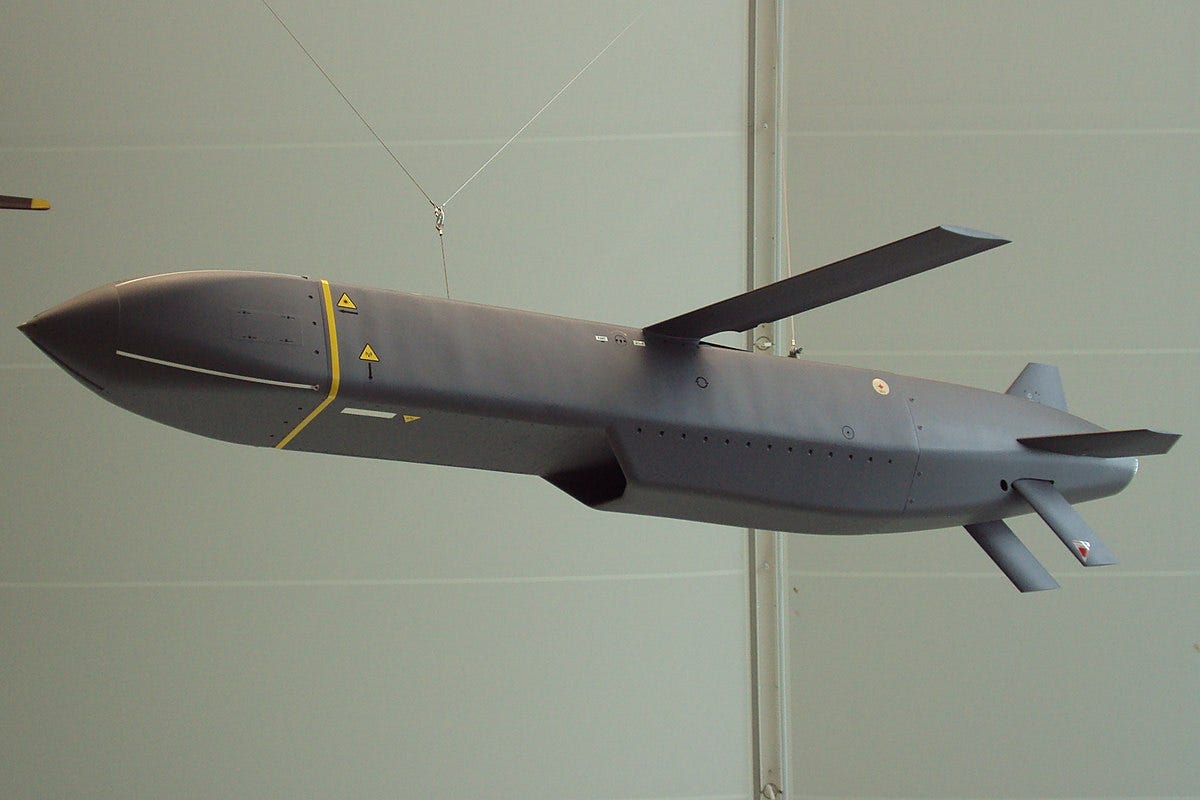
MBDA SCALP-EG

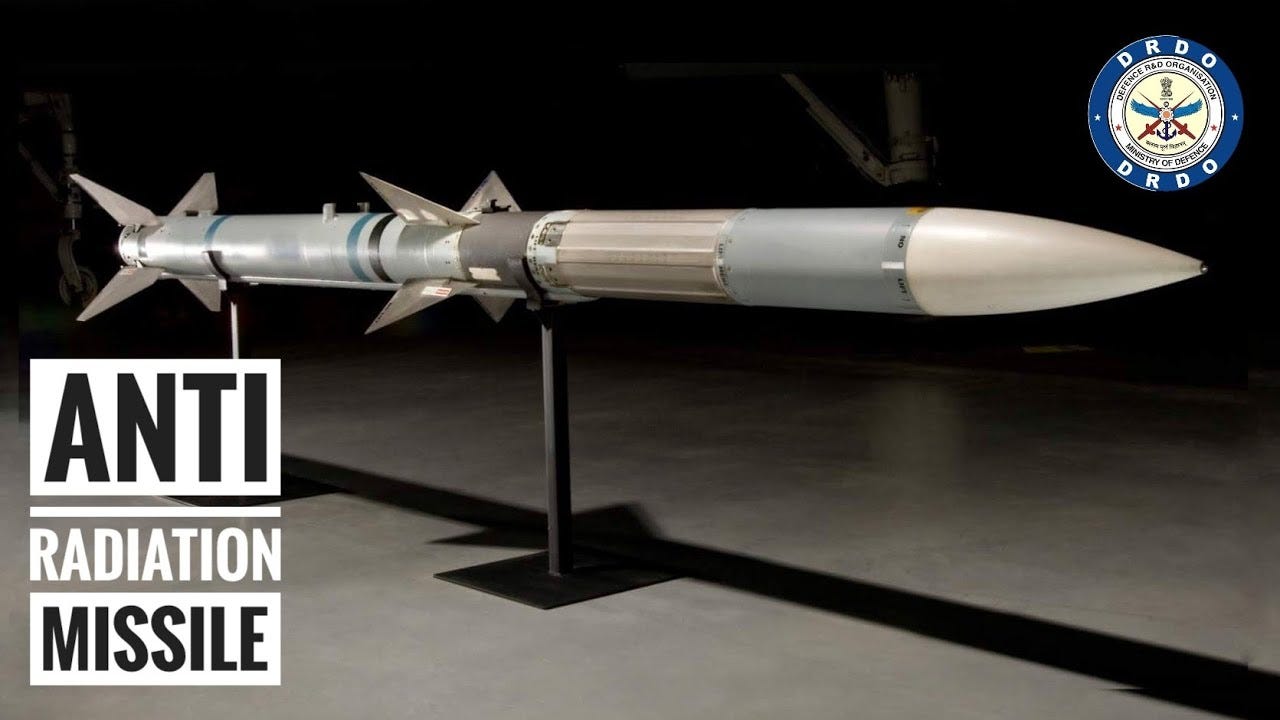
DRDO NGARM

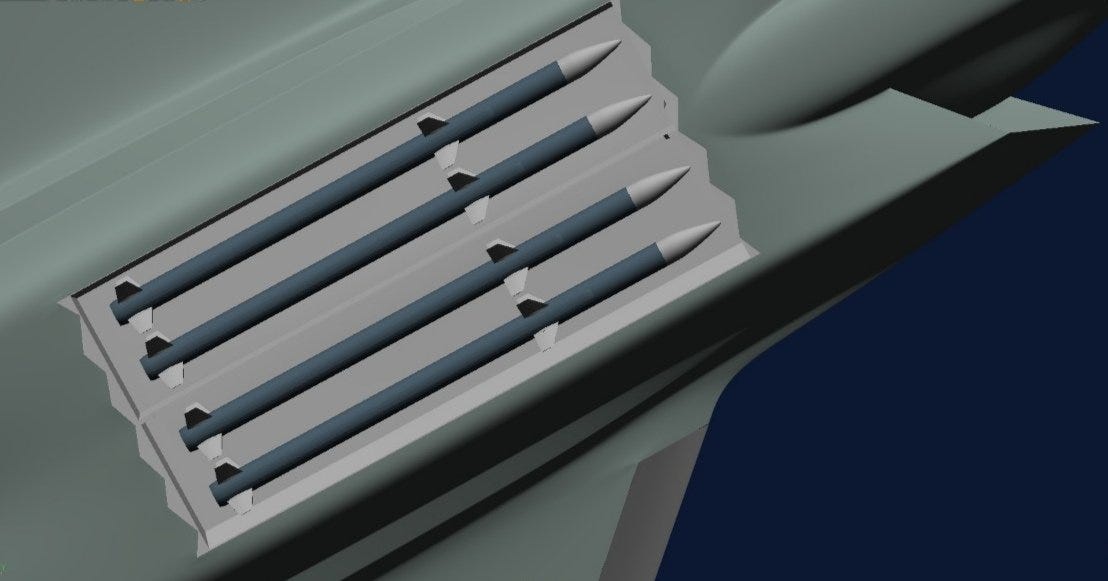
Internal bays of AMCA with a total of 4 Astra BVRAAM that can be carried at once, also notice the saw-tooth trailing edge design.

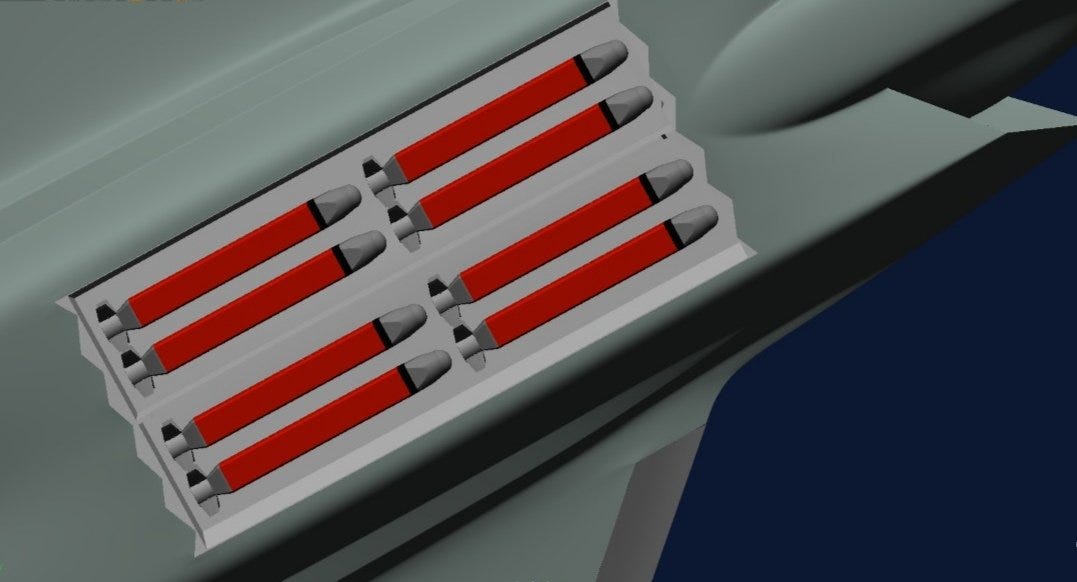
Internal bays of AMCA with a total of 8 DRDO SAAW Bombs that it can carry at once, also notice the saw-tooth trailing edge design.

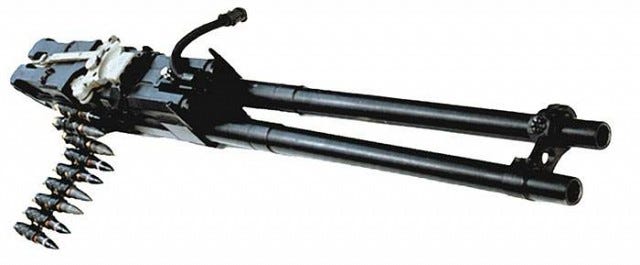
Gryazev-Shipunov GSh-23


Specifications of this gun

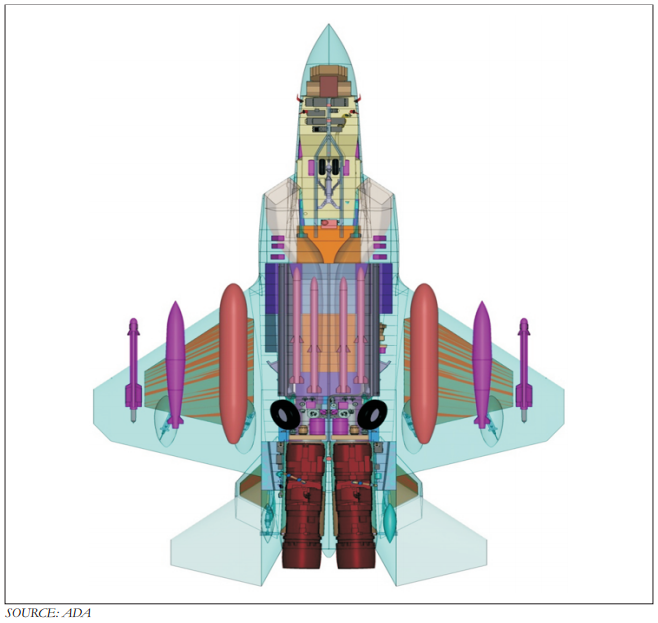
An older design of AMCA showing the internals of the aircraft including the internal bay carrying weapons


This picture shows how much R&D has been going on for this project
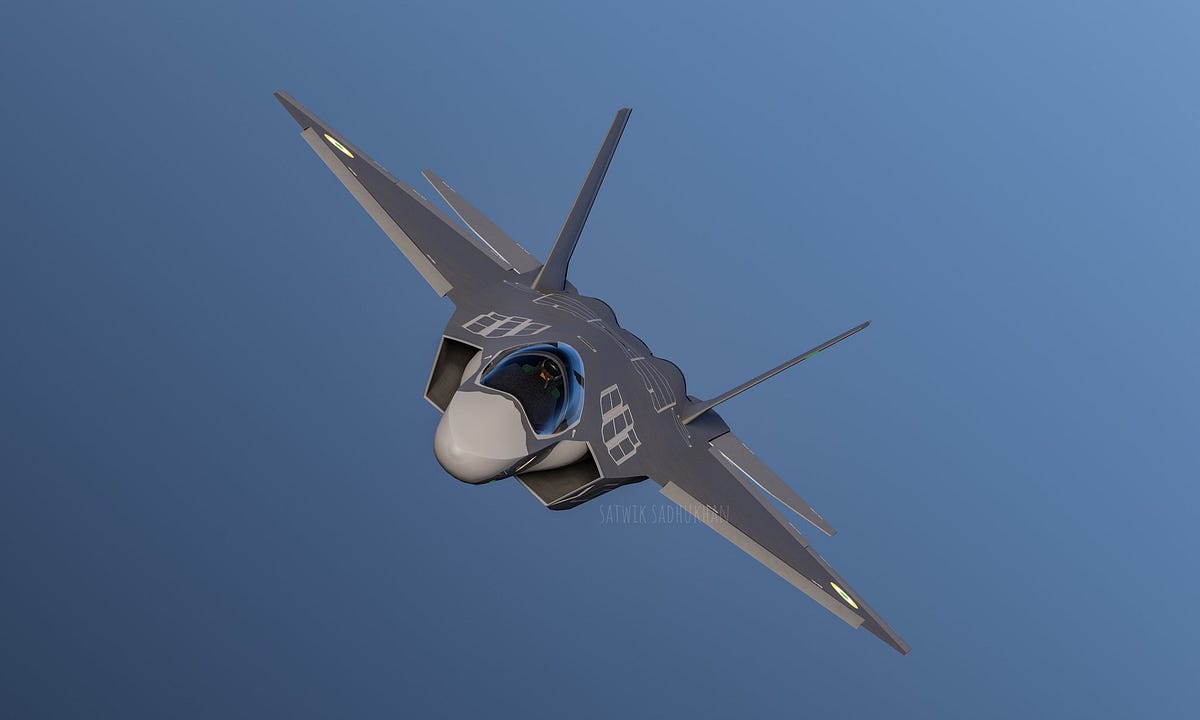
 flyingdaggers45.medium.com
flyingdaggers45.medium.com
Apr 15· 30 min read

An unofficial rendering of the Advanced Medium Combat Aircraft based on the actual design
AMCA or the Advanced Medium Combat Aircraft is a fifth-generation fighter aircraft which will be manufactured by HAL. The AMCA programme is envisaged as replacement for a host of aircraft currently operated by the IAF as well as to fill gaps left by retirement of the Dassault Mirage 2000s, SEPECAT Jaguars and Mig-27s. ADA describes the AMCA as a “multirole combat aircraft for air superiority, point air defense, deep penetration/strike, special missions”.
Unofficial design work on the AMCA started in 2008 with official work started in 2011 and completed in 2014. In 2008 Indian Navy also showed interest in the naval variant of AMCA. All the design work is completed and HAL has started the manufacturing of the AMCA Prototypes, starting with the manufacturing of avionics and subsystems.
The broad requirements outlined for the AMCA are to incorporate a high degree of stealth, a high internal and external weapons payload, high internal fuel capacity, and the ability to swing from an air-to-air role to air-to-ground. It is also going to have the ability to super cruise. This allows the aircraft to travel at supersonic speeds with greater endurance as the afterburners do not have to be used with the additional fuel usage for Super Sonic flight. Even though future air combat has been envisaged as being beyond visual range excluding the likelihood of aerial dogfights as before, the AMCA is going to sport a 3D thrust vectoring nozzled engine. The ADA has designed the AMCA as a platform with high survivability, to meet the challenges of future air defense environments through a combination of high degree of stealth, electronic warfare capability, sensors and kinetic performance. The design philosophy seeks to balance aerodynamics and stealth capabilities.
The aircraft will have an empty weight of 12 tons with 2-tons of internal weapons and 4-tons of internal fuel. Combat ceiling will be 65,000 feet, max speed of 1.8-Mach at 11-km altitude. The AMCA will be powered by 2 x 110 KN thrust engines with vectored nozzles.


The Advanced Medium Combat Aircraft
Airframe
AMCA will use carbon-fibre composites (C-FC), and titanium alloy steels for construction. The LCA Tejas already has 45% of its airframe by weight made of Composite materials which is among the highest in all fighter jets.

A graph showing Aircrafts with amount of composites used in manufacturing of the airframe, LCA has among the highest in fighter aircrafts.
The AMCA would employs C-FC materials for up to 60-80% of its airframe by weight, including the fuselage (doors and skins), wings (skin, spars and ribs), elevons, tailfin, rudder, air brakes and landing gear doors. Composite materials are used to make an aircraft both lighter and stronger at the same time compared to an all-metal design, and the AMCA’s percentage employment of C-FCs is one of the highest in an aircraft. Apart from making the aircraft much lighter compared to conventional metal airframed aircraft, There are also fewer joints and rivets, which increases the aircraft’s reliability and lowers its susceptibility to structural fatigue cracks, improves the maintainability of the Aircraft causing a better availability rate. High usage of composite materials in AMCA will improve its stealth character. The majority of these composite materials are bismaleimide (BMI) and composite epoxy material. The aircraft will be the first mass-produced aircraft to include structural nanocomposites, namely carbon nanotube reinforced epoxy. Stressed ducts in s-shape are locked with airframe with the loaded bulkheads which are made of composite materials spanning the aircraft from air intake to engine shafts.


Design
The AMCA is a multirole fighter aircraft, with shoulder mounted diamond shaped trapezoidal wings, a profile with substantial area-ruling to reduce drag at transonic speeds, and an all-moving Canard-Vertical V-tail with large fuselage mounted Tail-wing. Flight control surfaces include leading and trailing-edge flaps, ailerons, rudders on the canted vertical stabilizers, and all-moving tailplanes; these surfaces also serve as Air brakes. The cockpit features a single seat configuration which is placed high, near the air intakes and wings of the aircraft to provide good visibility to the pilot with a single bubble canopy construction. The aircraft features a tricycle landing gear configuration with a nose landing gear leg and two main landing gear legs. The weapons bay is placed on the underside of the fuselage between the nose and main landing gear. The AMCA is designed to produce a very small radar cross-section, to accomplish this it features serpentine shaped air-intakes to reduce radar exposure to the fan blade which increases stealth, uses an internal weapons bay and features the use of composites and other materials. The flight control surfaces are controlled by a central management computer system. Raising the wing flaps and ailerons on one side and lowering them on the other provides roll.A leading-edge root extension (LERX), which is a small fillet, is situated on the front section of the intake and wings of the aircraft. It has a typically roughly rectangular shape, running forward from the leading edge of the wing root to a point along the fuselage. Also, the AMCA has an In-flight refueling (IFR) probe that retracts beside the cockpit during normal operation.
The AMCA will be capable of operating in manned as well as in unmanned modes. According to the Indian Air Force chief Rakesh Bhadauria, the AMCA will have “sixth generation characteristics”. He later said that such characteristics will added after first focusing on fifth-generation capabilities.






The structural layout of the aircraft incorporates some of the key design features that define a 5th- generation fighter aircraft. The following graphics show the evolution of the AMCA design, and is consistent with the modifications to that design over the years. The initial tailless double engine, delta design is clearly no longer in the offing, having moved to a double delta wing, with vertical and horizontal stabilisers in design 38–01. By 38–09 the angle of the vertical stabilisers has changed and the wings too have transitioned to a design much like the F-22.








Wing tunnel testing models of earlier designs of AMCA


DSI Intake
The AMCA will also feature a Diverterless Supersonic Inlet over conventional intakes. The Diverterless Supersonic Inlet (DSI) is a novel air inlet design principle, used most famously on the Lockheed Martin F-35 Lightning II. A Diverterless Supersonic Inlet (DSI) compared to a conventional intake can reduce the weight and weight is the primary driver to reduce cost and increase performance of a fighter aircraft.Modern fighters require excellent inlet/engine adaptability under wide flight conditions, taking into consideration the low radar cross section (RCS). The DSI, also referred to as the Bump inlet, provides this solution. A three-dimensional surface, or a bump, functions as a compression surface on the surface of the fuselage which creates a pressure distribution that pushes boundary layer air away from the inlet. The bump inlet separate the boundary layer by the high pressure zone generated by a 3-demensional bump before the inlet. The inlet cowl lips are designed to allow most of boundary layer flow to spill out of the aft notch.
The DSI structure complexity is greatly reduced by the removal of moving parts, a boundary layer diverter and a bleed or bypass system thus decreasing the aircraft’s empty weight, production cost, and requirements of maintenance-supporting equipment. Furthermore, by eliminating the surface discontinuity of the diverter, the forward sweep cowl lips and the S-shaped duct, which house the mental blades within the engine’s compressor, the bump can efficiently decrease the RCS.


Example of DSI Intakes, notice a bump in the intake without a splitter plate, above is TEDBF’s and below is the AMCA’s DSI Intake.
Aerodynamics
AMCA is a relaxed static stability design with a shoulder mounted diamond shaped trapezoidal wings, a profile with substantial area-ruling to reduce drag at transonic speeds, and a non-all-moving Canard-Vertical V-tail with large fuselage mounted Tail-wing. Flight control surfaces include leading and trailing-edge flaps, ailerons, rudders on the canted vertical stabilizers, and all-moving tailplanes; these surfaces also serve as Air brakes as no dedicated airbrakes will be provided to maintain its stealth profile in the skies.Trapezoidal wings reduces the air drag at higher mach thus giving the aircraft the ability to supercruise. Also it provide a better handling at subsonic speed than other delta wing aircrafts, which makes it suitable for ground attack roles too.
Relaxed static stability will give increased maneuverability to AMCA. Greater stability leads to lesser control surface authority, therefore a less stable design will have a faster response to control inputs. A less stable aircraft requires smaller control deflections to initiate maneuvering; consequently drag and control surface imposed stresses will be reduced and aircraft responsiveness will be enhanced.


Advanced Medium Combat Aircraft
Quadruplex Fly-by-light
AMCA will use a Quadruplex digital Fly-By-Light system to control the flight instead of conventional Fly-by-wire systems. Fly-by-light or Fly-by-optics uses fibre optic cables instead of copper wires used in Fly-by-wire. Fibre optic cables are made up of bundle of glass strands coated in insulated cover. Fibre optic cables nowadays widely used for networking and communication as it offers many advantages over copper cables in Fly-by-wire. According to Collins (2015) here is the advantages of using fibre optic cables:- BANDWIDTH
- HIGH SPEED
- DISTANCE
- SECURITY
- RELIABILITY
- CABLE SIZE
- COST
- IMMUNE TO ELECTROMAGNETIC INTERFERENCE (EMI)


Fibre Optic Cables
The quadruplex digital Fly-by-light system of the aircraft employs an advance next-generation distributed digital flight control computer (DDFCC) made by Aeronautical Development Establishment (ADE) comprising four computing channels, each with its own independent power supply and all housed in differently placed LRU. The DFCC receives signals from a variety of sensors and pilot control stick inputs, and processes these through the appropriate channels to excite and control the elevons, rudder and leading edge slat hydraulic actuators. DFCC provides Raising the wing flaps and ailerons on one side and lowering them on the other provided roll. The pelikan-tail fins are angled at 27 degrees from the vertical. Pitch is mainly provided by rotating these pelikan-tail fins in opposite directions so their front edges moved together or apart. Yaw is primarily supplied by rotating the tail fins in the same direction. The AMCA is designed for superior high Angle of attack (AoA) performance. Deflecting the wing flaps down and ailerons up on both sides simultaneously provided for Aerodynamic braking
Stealth
The AMCA is designed to be difficult to detect by radar and other electronic measures due to various features to reduce radar cross-section include airframe shaping such as planform alignment of edges, fixed-geometry serpentine inlets that prevent line-of-sight of the engine faces from any exterior view, use of radar-absorbent material (RAM), and attention to detail such as hinges and pilot helmets that could provide a radar return. Efforts have been made to minimise radio emissions and both the infrared signature and acoustic signature as well as reduced visibility to the naked eye. Alignment of wings, tail, flaps and other edges increases radar and visual stealth. The AMCA will also feature a Diverterless Supersonic Intake, which will help improve its stealth capabilities.Radar absorbing structures and radome, body conformal antennae surface hard aperture, flush air data sensors and frequency selective surface (FSS) radome are used to reduce radar detection. Stealth ability is enhanced by the use of microelectromechanical systems (MEMS) and nanoelectromechanical systems (NEMS) during the construction of the airframe and in the airframe and instruments. AMCA’s design prevents detection of the aircraft from L band, C band and X band radars. The aircraft’s thrust vectoring nozzle reduces infrared emissions to mitigate the threat of infrared homing surface-to-air or air-to-air missiles. Additional measures to reduce the infrared signature include special paint and active cooling of leading edges to manage the heat build up from supersonic flight.
Engines due to their large, highly radar reflecting moving parts are critical to any ‘stealth’ design. From a purely radar detection point of view, masking the engine intakes is critical — that is to say, no element of the engine should be visible when looking into the intakes. As a rule of thumb — if the naked eye can see the engine blades from the air intakes, then so can a radar. While several 4th-generation aircraft mask their engines partially by ‘twisting’ the air intake, true stealth needs complete masking that requires the engine to have an ‘s curve’.Front Aspect Stealth and Engine Masking
The ADA indicates just such an S curve for the AMCA. This is achieved in two ways: with the internal weapons bay, and cockpit placed in front of the engines. This creates partial vertical masking. Partial horizontal masking is achieved by offsetting the alignment of air intakes. Theoretically, between the partial vertical and horizontal masking, the engines blades are fully concealed in the front hemisphere.


1:1 scale model of AMCA’s Serpentine Intake
The AMCA design indicates a broad central internal weapons storage space just near to the cockpit and air intakes. While one can speculate that this, combined with the vertical S-curve could mask the engine entirely, it is impossible to tell at this stage, given that the dimensions of the engine remain unknown and hence its volumetric and alignment implications, unclear. Moreover, the F-22 is a large, heavy fighter with much space for expansive configurations. It remains to be seen whether such a configuration will suit a more compact, lighter ‘medium’ fighter that the AMCA is going to be.


AMCA
The ADA claims the radome of the AMCA will be of ‘advanced construction’, presumably meaning that it will only allow the operating frequencies of the mated radar to transmit from the dome, while blocking other radars. This is a significant stealth measure since normal radomes are merely shaped for aerodynamic efficiency but freely allow radar waves through. This means adversarial radar waves ‘see’ past the radome onto a flat heavily radar reflective surface.
The cockpit & canopy presents a problem similar to the radome. Shaped for vision and aerodynamic efficiency, the jagged edges and facets of the cockpit within reflected radar waves increasing its RCS. Radar waves normally enter the cockpit, reflects of objects & possibly return to the radar and even the HMD of pilot itself contributes to RCS. India’s Light Combat Aircraft canopy is coated with a thin film transparent conductor of Indium Tin Oxide. The coating is thin enough that it has no adverse effect on pilot vision and can reflect the radar waves away from the radar antenna. An advanced version of this is also expected in AMCA. AMCA also proposes a frameless bubble canopy to increase its stealth profile, but manufacturing of this kind of canopy is really a challenge.


AMCA cockpit with a coating of Indium Tin Oxide.


An official infographic by ADA mentioning the use of ITO coating on canopy, and other salient features of AMCA. Also notice that this is the final frozen design of AMCA which may see only little airframe changes after testing.
Now we’ll talk about the rear aspect of the AMCA. Perhaps the most significant feature that detracts from stealth in this early design of AMCA is the circular engine exhausts. These are not just radar reflective but also erode stealth in the infra-red and other electro-optical detection arenas. In contrast, square exhausts, as seen on the F-22, reduce infrared signatures by up to 25 percent given the percentage increase in surface area of a square over a circle of the same dimensions. But this approach also reduced the thrust output of F22. AMCA will come with a 3D thrust vectoring nozzles hence a square exhaust with a zig-zag nozzle like F22 to reduce radar and IR signature is unlikely. This kind of nozzle is heavy and less maneuverable.
Radar Absorbant Materials
The Radar Absorbant Materials for AMCA are already ready known as DRDO Adrishya RAM Paint. “Adrishya” means invisible in Hindi. A highly advanced variant of this Adrishya RAM will be used as the conventional Adrishya RAM is quite old.

DRDO adrishya RAM Paint with details on the pic related to this Radar Absorbant Material
Saw-tooth trailing edge designs
Also Saw-tooth trailing edge designs will be used at all openings and points which may reflect radar waves, it diverts the radar waves in different directions improving the stealth characteristics of an FGFA like AMCA.

The geometrical of serrated saw-tooth trailing edge design
Example:


Weapons and Weapons Bay
The AMCA features an internal weapons bay, but a non-stealthy version with external pylons is also planned. The aircraft is planned to be equipped with beyond visual range missiles, close combat missiles, standoff weapons, precision weapons and laser guided bombs. Directed energy weapons are also planned to be equipped on the AMCA Mk2.

AMCA internal weapons bay
Perhaps the biggest design challenge for the AMCA’s weapons bays is the lack of a suite of indigenously produced weapons systems. As of now, the Beyond-Visual Range Air-to-Air missile (BVRAAM) Astra is just having 110km range which is a decent range but Astra MK2 and MK3’s arrival will make it a capable aircraft, also the DRDO Smart Anti Airfield Weapon (SAAW) is under trial and will soon be inducted.
The newer design shows two large bays with two bi-fold doors with a saw-tooth design to increase stealth characteristics, as opposed to previous graphics that showed a single large weapons bay. The implications for hull integrity.


Sensors and Targetting Systems
The primary sensor will be gallium Nitride (GaN) based radar with ≥1500 T/R Modules. Infrared based systems like IRST in the form of DAS (Upgraded version of DRDO’s DC-MAWS), missile warning systems, laser warning system also added internally in the AMCA. The IRST sensors are placed in all sides of the AMCA to provide full angle coverage like in Rafale and F-35. The proposed IRST system will work similar to the F 35’s DAS which shares the informations to friendly units like via the satellite and highly secured data links using AMCA’s network centric warfare suite.There is as of now no clarity whether the AMCA will have F-35 like EOTS or not, but it seems that ADA will do some improvisation for it.


F-35’s EOTS, a crystal like projection below the nosecone.
AMCA also comes with self protection jammer system to jam enemy radar guided missiles from both air and ground. Electronic counter measure systems to confuse the infrared guided missiles (DIRCM) and a radar warning receiver too added to detect enemy radar frequencies.
The Multifunction RF Sensor, which has broad spectrum agility, includes capabilities for electronic countermeasures (ECM), electronic support measures (ESM), communications functions, and possibly even microwave weapon functions. AMCA will be integrated from the cockpit to accompanying UAVs and UCAVs which will include DRDO AURA, DRDO Rustom through encrypted datalink connections.
During AeroIndia 2017 The members of a defence site named Livefist chanced upon the above slide that they found tucked away in a corner of the small Defence Avionics Research Establishment (DARE) stall in the DRDO pavilion.
While They’ve reported extensively on the AMCA’s intended stealth characteristics, including serpentine intakes and internal weapons bays, the slide you see here is, in Livefist’s view, the most significant and revealing set of details on the deep research being done in what is by far the most challenging part of the AMCA’s design: active phased array technology. This comprises the spread of separate sensor elements embedded across the AMCA’s airframe in a way that consolidates overall stealth and lowers all aspects of the aircraft’s final signature, while making use of that very spread to provide a heightened degree of sensor coverage and domain awareness to the pilot. (Think of the spread like a dashboard camera that’s actually a network of cameras situated all around the car, providing the driver with a wide sweep view of what’s happening around the vehicle).


AMCA’s Active Phased Array Technology by DRDO
Antenna elements as part of the phased array spread will come up for their first torture test with the full scale AMCA mock-up soon in Hyderabad. And getting it right is non-negotiable, especially since this is technology no company or country will conceivably share.
The 16 element linear and 32 element planar array will either segue smoothly into the functionality of stealth or stick out sorely and make the AMCA significantly more visible across electromagnetic spectra. In other words, it isn’t just how well these little elements work separately, but how they work together — and above all, how well they are housed in the body of the aircraft so they don’t interfere with stealth.
‘Make or break technology’ in the words of a DARE scientist who spoke on condition of anonymity to Livefist. Antenna architecture, overall computational electrodynamics and the true integration of these elements with an airframe design that’s still in flux means there’s huge pressure to get it right. Indeed, this is research that could have spin-offs for the LCA Mk.2 programme as well.
The slide you see here is affirmation that the most significant elements that will potentially make the AMCA a true fifth generation machine are deep in the works. This is research that will imbue the performance of India’s Ghatak UCAV too, considering the large amount of basic technological R&D feeding jointly into both programmes (as Livefist reported earlier, the AMCA and Ghatak are actually a joint lead-in project).
Tech partnerships on the AMCA will likely involve offsets-driven sensor packages and broad consultancies in the post-design phase, including flight test and airborne empirical studies new to India since this will be the country’s first stealth aircraft built at home. What those partnerships won’t include are the driving forces that compel the very stealth that the AMCA hopes to sport.


Advanced Medium Combat Aircraft
Range


The Combat Radius of AMCA
The ADA is designing the AMCA with an internal fuel capacity of 4 tonnes to exclude the necessity of carrying outboard fuel tanks which significantly compromise the aircraft’s stealth properties. The ADA estimates that the AMCA will have a combat radius of 1,000 km on these 4 tonnes of internal fuel. However it will also be equipped with air-to-air refuelling capability, increasing its endurance and operational radius as can be seen in the range arcs provided above with a retractable IFR probe for improved stealth characteristics.
Sensor Fusion
In AMCA all the data collected from the various sensors processes and present to the pilot as a single integrated picture of the battle field and possibly share to other fighters and ground stations automatically (Net centric). This kind of sensor fusion will provide the pilot a stunning situational awareness.AMCA will have vehicle management (including weapons), data fusion, decision aids, integrated modular avionics, internal carriage of weapons, signature control. The AMCA will have a quadruplex fly-by-light system. It makes AMCA more immune to electronic attacks (EMI-electromagnetic interference, HIRF –High energy radiated fields) and much better transmission speed and processing capabilities compared to conventional Fly-by-wire systems used mostly on all fighter aircrafts flying today. Fly-by-light also helps to reduce the weight of the aircraft. The higher band width of fly-by-light is very useful in controlling the aircraft at high speeds. Higher bandwidth ensures higher data transfer rate, therefore pilots command passes rapidly from aircraft cockpit to control surfaces which ensures smooth aircraft maneuvering even in high speeds especially AMCA is designed as an aircraft with super cruise capability the advantage of Fly-by-light is enormous and also improves the safety margin of AMCA.
Another major advantage of Fly-By-Light is , AMCA will use composites to make its body , use of composite materials in aircraft structures will decrease the effect of electronic attack of enemies cos composites are less suspected to EMI than metal structures .Consequently, Fly-by-wire are subjected to greater electrical interference which can degrade performance. But optical pulses transmitted by FBL system are unaffected by the much lower frequency electromagnetic waves that characterize the Electronic attack threat.
AMCA will have another feature called self repair / self protection. Self repair will achieve with the help of self-diagnosing and self-healing systems that distribute the work load to other systems from affected to non-affected systems. Self protection would be provided with the use of nanotechnology to produce advanced composite materials designed to have a higher resistance to damage and therefore reducing the damage surface area. The aircraft uses Self Repairing Flight Control Capability to automatically detect failures or damage in its flight control surfaces, and using the remaining control surfaces, calibrate accordingly to retain controlled flight. The use of adaptive neural networks would be a key feature in self healing and self repairing they can record all the faults occurred and also can learn from the previous faults.


Advanced Medium Combat Aircraft
Radar
The AMCA will incorporate an Active Electronically Scanned Array (AESA) which, the official illustrations indicate, is also mechanically steerable. This is an advantage as the beam manoeuvrability of an AESA can be stretched to a broader detection area.The AMCA will host a new generation GaN (Gallium Nitride) based Shared Aperture AESA Radar with for superior detection and performance. State owned LRDE had initiated a project to develop a small size air borne X band GaN based AESA radar for AMCA. LRDE already shows a model of AESA radar in last year’s Aero India exhibition


Simplified block diagram of a T/R module
Gallium nitride, or GaN, is a semiconductor material with high breakdown voltage and high electron mobility. Similar to gallium arsenide (GaAs), the high electron mobility enables high frequency operation; unlike GaAs, however, the high breakdown voltage of GaN supports high electric field strength in the device. By operating at a higher voltage, GaN-based amplifiers are able to provide a much higher output power in a smaller space.
Using GaN technology in the design of the TR module’s power amplifier maximizes the transmit output power while minimizing the physical size. In addition to shrinking the size of the amplifier die, the use of high-power GaN reduces the need to use many lower-power devices. Since the passive combining networks that are used to combine multiple die are large and introduce loss into the signal path, having fewer of them improves the power density in the TR module.
The higher bias voltage of GaN offers an additional benefit at the circuit level. Since power is the product of voltage and current, for a constant power, the higher bias voltage of GaN leads to lower current. When the current is reduced, the loss in the bias circuit is also reduced, which improves the efficiency of the amplifier.
So in short Gallium Nitride (GaN) based AESA radars have better transmitting as well as receiving capabilities compared to a Gallium Arsenide (GaAs) based AESA radar which are commonly used in most of the fighter aircrafts with AESA radars flying today. Better transmitting capabilitiy means that the GaN based radar can have a significantly much higher range compared to a standard GaAs based AESA radar. Better receiveing capabilities means that it can detect even weaker radar signals which reflect back from target which means that it is easier for GaN based radars to detect Stealth Aircraft compared to a GaAs based AESA radar. The one DRDO is working on is a Shared Aperture Radar.
What is A Shared Aperture Radar?
In simple terms, a shared aperture radar combines the functionality of multiple antennas into one, for example — using a radar antenna for electronic warfare and long-range tactical communication. The aperture can be shared in multiple ways. One way is time-interleaving, when radar functions aren’t being used, the aperture can be used for other purposes. Another way is to subdivide the aperture into smaller segments, with each segment performing a specific task simultaneously, furthermore, each segment can be time-interleaved, for ex. radar segment may have interleaved modes. Finally, a shared aperture may also use multiple independent beams to perform multiple functions simultaneously. The last approach is the most advantageous as well as complex (isolating beams and inter-modulation products is a challenging task).Primary requirements of a shared aperture radar are
- Wide bandwidth radiating elements
- Multiple polarisation
LRDE developed a 16x16 element planner array antenna to investigate the technology. The small antenna array provided sufficient functionality to study associated radiation characteristics and trade offs. Since the primary requirement is wide bandwidth ( >50% of centre frequency) and dual polarisation, it prevents the use of the common type of antennas such as microstrip patches, printed dipoles, and open-ended dipoles as the bandwidth of these antennas is <=30% of center frequency.
Therefore, TSA (Tapered slot antenna) AKA Vivaldi flared notch antenna was selected. TSA antenna meets all the requirements mentioned above. It has symmetrical radiation pattern, high gain, and wide bandwidth. The most recognisable feature of the TSA antenna is its V-shaped flared notch. The narrower region of the notch radiates RF signals of high frequency, whereas broader part radiates RF signals of low frequency.The geometry of Tapered Slot Antenna(TSA)/Vivaldi Antenna.






DRDO has invested a lot of money in gallium nitride MMIC development projects and there are plans to set up a state of the art GaN foundry at IISc. It’s likely that TR modules of AMCA’s radar will use GaN-based solid-state RF amplifiers. GaN MMIC combined with latest LNA tech will greatly enhance detection range (greater than 200km for a 1 sqm RCS target). It also eliminates the requirement of a liquid coolant circulation based cooling system. Existing radars in IAF service use traveling wave tube amplifier (TWTA) and slotted waveguide antenna (planer array of slots). The bandwidth of these radars is relatively narrow (600–800MHz). More advanced radars such as DRDO Uttam and EL/M-2052 have a much wider bandwidth (1–3GHz). A wideband radar using TSA radiating element may have a bandwidth no less than 5 GHz and an enhanced probability of detection+classification and it’s much more difficult to jam. The associated wideband/multi-channel MMIC is however very complex and expensive. It is in an early development stage and the technology in question is futuristic. If this radar tech indeed goes to the AMCA, then the development period is perfectly aligned with the timeline of the aircraft being inducted into the IAF i.e around 2035 when first Production AMCA will be inducted into Indian Airforce.


DRDO’s UTTAM GaAs based AESA Radar
Cockpit
One of the most dramatic aspects AMCA will be its cockpit and man-machine interface. AMCA cockpit could have a panoramic active-matrix display of the kind available on American fifth generation aircraft with dimensions of 60 by 24 centimeters designed by DARE and manufactured by Samtel or 44 by 18 centimetres by HALBIT which is a joint-venture between HAL and Elbit Systems . Conventional systems would be replaced with touch screen interfaces and voice commands (cockpit speech-recognition system). AMCA pilot will have an advanced helmet-mounted display system.

A mockup of AMCA’s cockpit, with controlling stick on the side enabled with HOTAS and a wide area display.
Cockpit features are
1. A wide area display (WAD). Touch Screen interface supported by voice commands.
2. A central SMFD for redundancy of critical information.
3. All digital display HUD.
4. A side stick controller on the right side. And a throttle stick on the left.
5. ITO coated single bubble canopy with all round visibility.


The primary flight controls are arranged in a hands-on-throttle-and-stick (HOTAS)-compatible configuration, with a right-handed side-stick controller and a left-handed throttle. HOTAS will give more control over air craft, because they give independent analog control over all three rotational axes (Pitch, Roll, and Yaw) as well as thrust. AMCA’s cockpit has a secondary “get-you-home” panel providing the pilot with essential flight information in case of an emergency
The pilot interacts with on-board systems through a multi-functional keyboard and several selection panels. The Head up Display and helmet-mounted display and sight (HMDS), and hands-on-throttle-and-stick (HOTAS) controls reduce pilot workload and increase situation awareness by allowing the pilot to access navigation and weapon-aiming information with minimal need to spend time “head down” in the cockpit.


Advanced Medium Combat Aircraft
Propulsion
AMCA will use 2x110KN engines with Full Authority Digital Engine Control (FADEC) that will be jointly developed by Gas Turbine Research Establishment (GTRE) of India and Rolls Royce of Britain. The engine will have joint IPRs held by both sides and will make sure GTRE can enhance and make high thrust derivatives of this engines without RR’s permission and vice versa. It will also help in logistics as majority of the engine components will be manufactured in India and will allow easier exports of the AMCA too.Initial production variants will come with enhanced General Electric GE-F414 engines.


General Electric GE-F414
Avionics
The system architecture of AMCA is much more advanced than what we seen in LCA Tejas. AMCA looking towards a quadruplex fly-by-light electrooptic architecture with fiber optic links for signal and data communications. And unlike centralized architecture on the Tejas, the AMCA proposes to sport a distributed architecture with smart sub-systems. Similarly, unlike the LCA’s centralized digital Flight control computer (DFCC), the AMCA could have a distributed system with smart remote units for data communication with sensors and actuators, a system that will necessitate much faster on-board processors.Defence Electronics Application Laboratory (DEAL) has designed and developed a next-generation network-centric aircraft management system (including weapons) including various features such as data fusion, Cooperative Engagement Capability, decision aids, integrated modular avionics, and intern signature control with sharpening for low observability. The aircraft will use integrated modular avionics for real time computing, and the fiber optic cables used on the aircraft feature photonic crystal fibres technology for faster exchange of data and information. Unlike the HAL’s previous fighter aircraft, the LCA Tejas, which has a digital flight-control computer and hydraulic controllers, the AMCA has a distributed processing system employing fast processors and smart subsystems and will be electronically controlled via a “central computational system connected internally and externally on an optic-fiber channel by means of a multi-port connectivity switching module”. This results in using the IEEE-1394B-STD a departure from MIL-STD-1553B data-bus standard. The connectivities will be switched by means of a multiport switching matrix, with data speeds of 400MB/second.
The AMCA’s EW suite is developed by the Defence Avionics Research Establishment (DARE) with support from the Defence Electronics Research Laboratory (DLRL). This EW suite includes a radar warning receiver (RWR), Missile Approach Warning (MAW) and a laser warning receiver (LWR) system, Infrared & Ultraviolet Missile warning sensors, self-protection jammer, chaff, jaff and flare dispenser, an electronic countermeasures (ECM) suite and a towed radar decoy (TRD).


DRDO
GaN HEMT (high electron mobility transistors)
GaN-on-silicon E-HEMT transistors are the choice for maximum performance, efficiency and cost-effective power supplies. Cost-effective driver technology enhances supply performance by simplifying layout, reducing component count, and improving reliability. DRDO developed 30 finger, 3 mm gallium Nitride based HEMT a crucial component for the development of GaN based radar, seekers and communication systems. It’s also very beneficial in space and other civilian application too. Due to its low sensitivity to ionizing radiation it a considered suitable material for solar cell arrays for satellites. Thus India one step closer to incorporating highly advanced GaN AESA radar for AMCA & other aircrafts.

The advantages of the HEMT include its high carrier concentration and its higher electron mobility due to reduced ionized impurity scattering. The combination of high carrier concentration and high electron mobility results in a high current density and a low channel resistance, which are especially important for high frequency operation and power switching applications.


Armaments
With advanced sensors the aircraft will be loaded with missiles like DRDO Astra family of Air-to-air missiles along with some other superior missiles, standoff weaponry as well as precision weapons. The aircraft will feature the ability to deploy Precision Guided Munitions. It will also feature extensive detection range as well as targeting range with the capacity to release arsenals at supersonic speed.Air-Air Missiles
- Astra MK1 — 110km range


DRDO Astra
2. Astra MK2 (Under Development) — 160km range


3. Astra MK3 (Under Development) — 350km range


4. Astra IR (Under Development) — 80km range


Air-Ground Munitions
- DRDO SAAW (Smart Anti-Airfield Weapon)


DRDO Smart Anti-Airfield Weapon
2. DRDO Long range glide bombs


3. DRDO HSLD (High Speed Low Drag) Bombs


Air-Surface Missiles
- BrahMos-NG — 450km Range (Under Development)(Non-stealth mode).


BrahMos-NG
2. BrahMos-II Hypersonic — 1000km range (Under Development)(Non-stealth mode).


BrahMos-II
3. SCALP-EG — 560km range (Non-stealth mode)


MBDA SCALP-EG
Anti-Radiation Missiles
→ DRDO NGARM (Next Generation Anti-Radiation Missile)(Non-stealth mode)

DRDO NGARM
How much it can carry internally?
The AMCA features two internal weapons bays which can carry Four air-air missiles in total and a total of Eight DRDO SAAW Bombs are carried in the internal bays, and there are external hardpoints for mounting up to six underwing pylons including two near wingtip pylons and two for drop tanks along with two hardpoints underneath the aircraft’s belly, with two on the each side of the weapons bay. AMCA’s high cruising speed substantially increases weapon effectiveness compared to its predecessors due to its ability to launch weapons at supersonic speed as shown in earlier infographic.

Internal bays of AMCA with a total of 4 Astra BVRAAM that can be carried at once, also notice the saw-tooth trailing edge design.


Internal bays of AMCA with a total of 8 DRDO SAAW Bombs that it can carry at once, also notice the saw-tooth trailing edge design.
Gun
It will also carry a Gryazev-Shipunov GSh-23, a Russian 23mm autocannon which is already used in India’s LCA Tejas and is likely to be used in all Indian fighter programs currently under development. This gun is locally manufactured by the OFB in India with some components imported directly from Russia which are manufactured there.

Gryazev-Shipunov GSh-23


Specifications of this gun


An older design of AMCA showing the internals of the aircraft including the internal bay carrying weapons
Specifications
General characteristics
- Crew: One pilot
- Length: 18 m (59 ft 1 in)
- Height: 4.8 m (15 ft 9 in)
- Wing area: 39.9 m2 (429 sq ft)
- Empty weight: 12,000 kg (26,456 lb) (estimated)
- Gross weight: 18,000 kg (39,683 lb)
- Max takeoff weight: 25,000kg (55,116 lb) (estimated)
- Fuel capacity: 6,500kg
- Powerplant: 2 × Modified GE F414 (initial production) afterburning turbofan
- Powerplant: 2 × GTRE-RollsRoyce JV built afterburning turbofan
Performance
- Maximum speed: Mach 2.15+
- Supercruise: Mach 1.82 (planned)
- Range: 3,240 km (2,010 mi, 1,750 nmi)
- Combat range: 1,620 km (1,010 mi, 870 nmi)
- Ferry range: 5,324 km (3,308 mi, 2,875 nmi)
- Service ceiling: 20,000 m (65,000 ft)
- Rate of climb: 300 m/s (59,000 ft/min)
Centres involved in AMCA Project


This picture shows how much R&D has been going on for this project

India’s Next Generation Fighter Aircraft, The AMCA.
AMCA or the Advanced Medium Combat Aircraft is a fifth-generation fighter aircraft which will be manufactured by HAL. The AMCA programme…
Last edited by a moderator:






